Mammals of the United States on:
[Wikipedia]
[Google]
[Amazon]
About 490 species of
 Didelphimorphia is the order of common opossums of the
Didelphimorphia is the order of common opossums of the
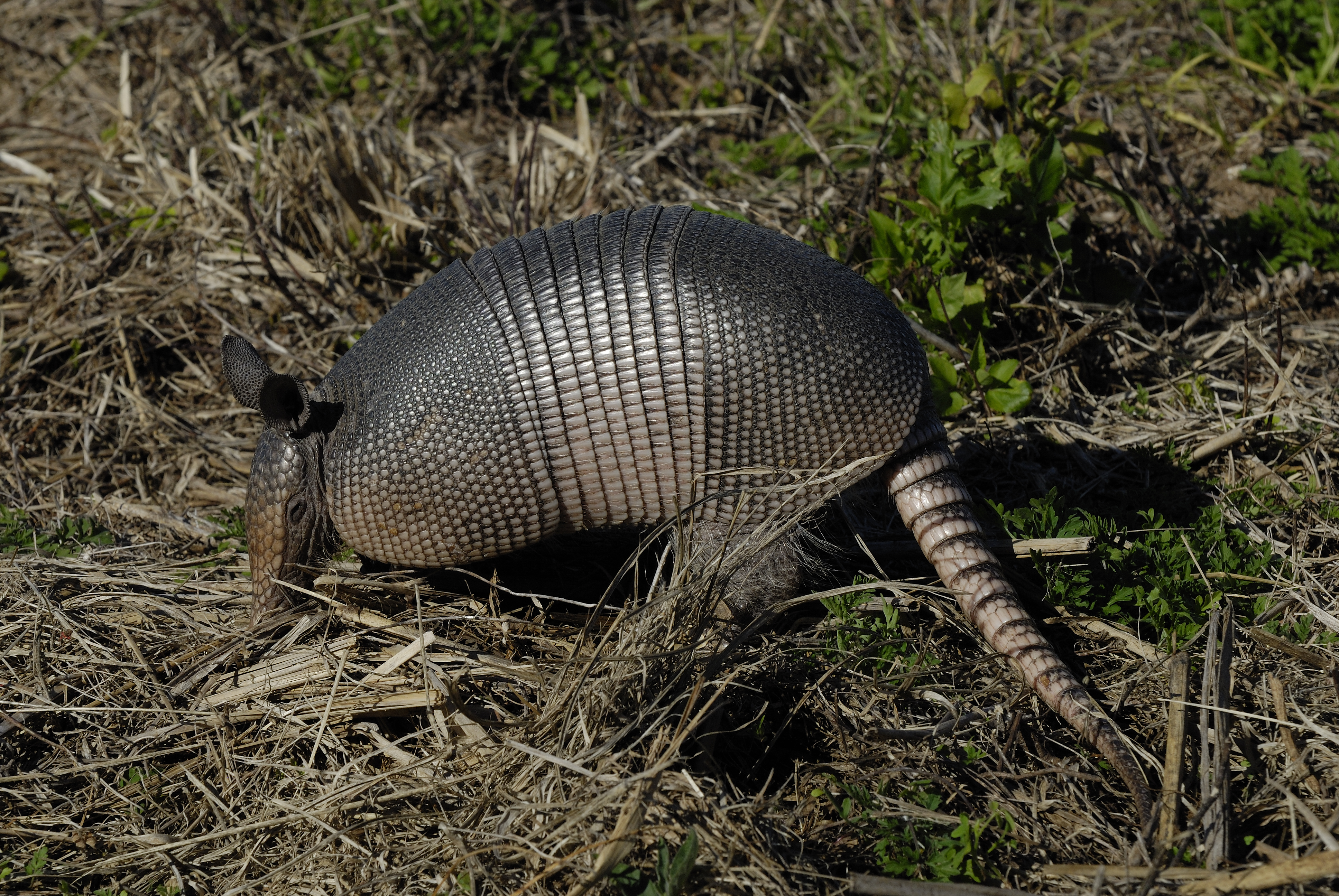 The armadillos are small mammals with a bony armored shell. They are native to the Americas. There are around 20 extant species. Only the nine-banded armadillo is found in the United States.
*Family: Dasypodidae (armadillos)
**Subfamily: Dasypodinae
***
The armadillos are small mammals with a bony armored shell. They are native to the Americas. There are around 20 extant species. Only the nine-banded armadillo is found in the United States.
*Family: Dasypodidae (armadillos)
**Subfamily: Dasypodinae
***


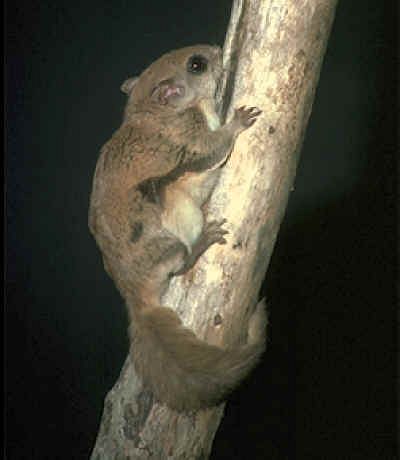
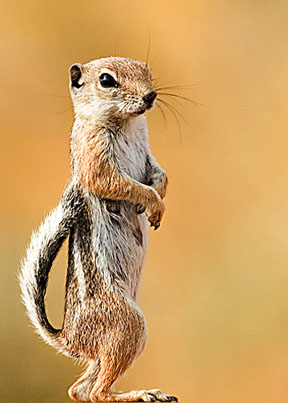






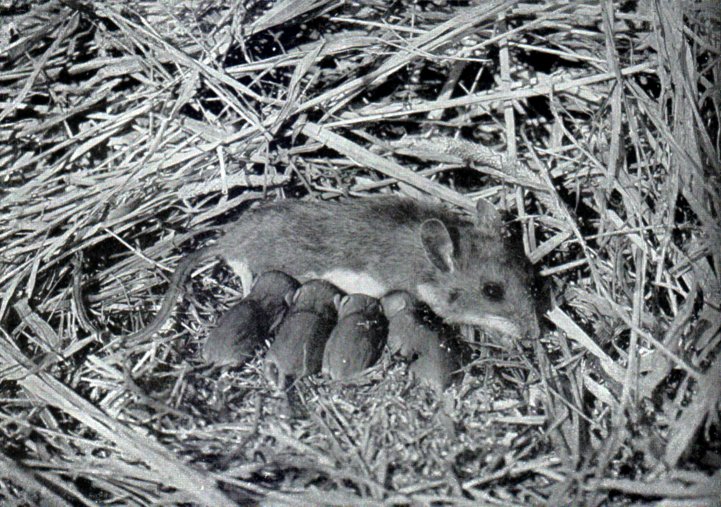
 Rodents make up the largest order of mammals, with over 40% of mammalian species. They have two
Rodents make up the largest order of mammals, with over 40% of mammalian species. They have two
(Carolina northern flying squirrel ''G. s. coloratus'', Virginia northern flying squirrel ''G. s. fuscus'': ) ***** Humboldt's flying squirrel, ''G. oregonensis'' ***** Southern flying squirrel, ''G. volans'' ****Tribe: Sciurini ***** Abert's squirrel, ''S. aberti'' ***** Arizona gray squirrel, ''S. arizonensis'' ***** Eastern gray squirrel, ''S. carolinensis'' ***** Western gray squirrel, ''S. griseus'' ***** Mexican fox squirrel, ''S. nayaritensis'' *****
( Delmarva fox squirrel, ''S. n. cinereus'': ) *****
(
(
(
( Preble's meadow jumping mouse, ''Z. h. preblei'': ) **** Southern meadow jumping mouse, ''Z. luteus'' ***
(''M. m. hualpaiensis'': ) ***** Mogollon vole, ''M. mogollonensis'' ****
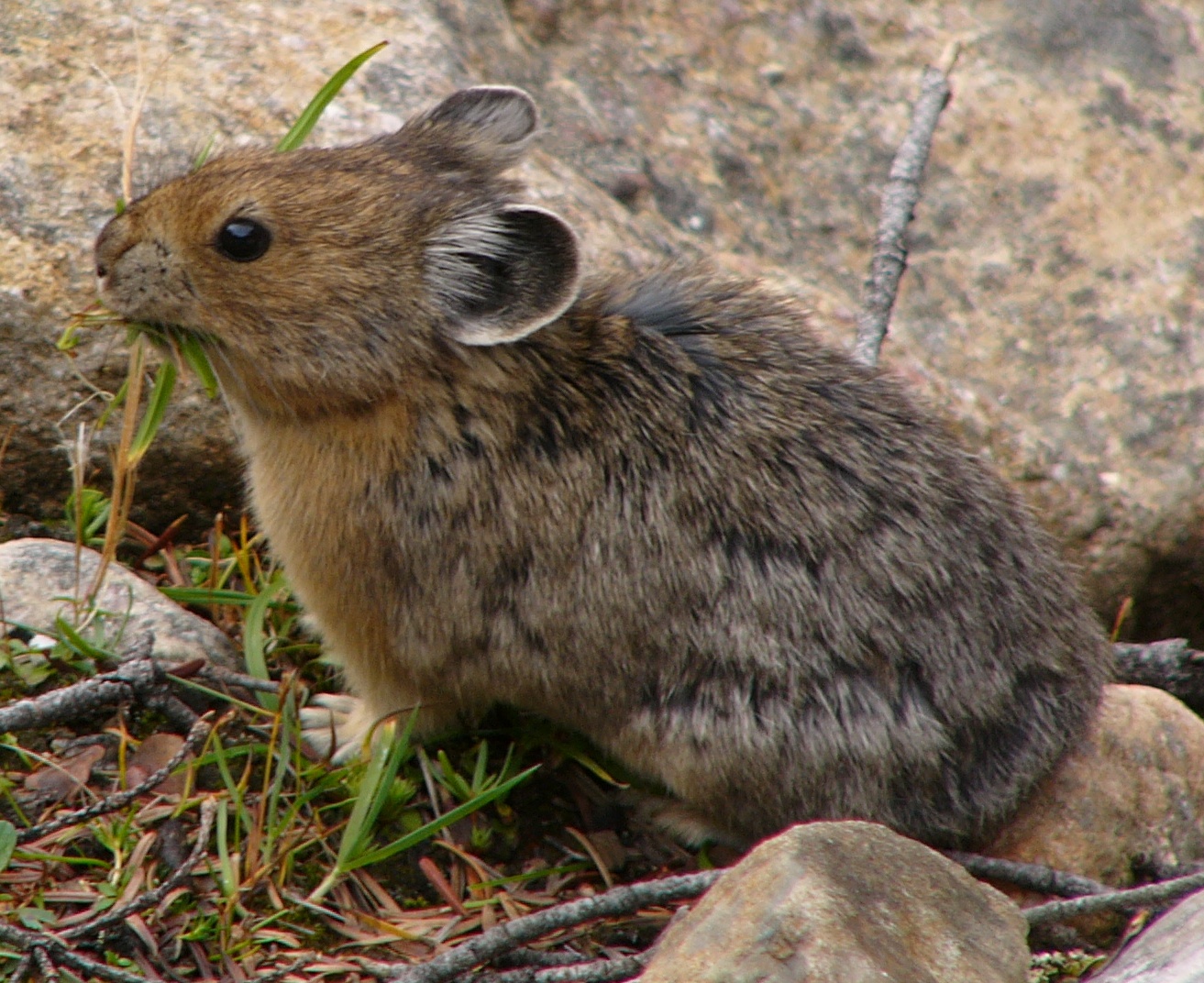

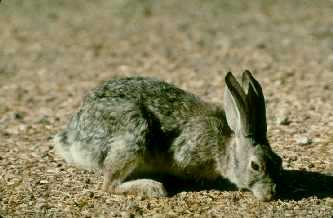
 The lagomorphs comprise two families, Leporidae (hares and rabbits), and Ochotonidae (pikas). Though they can resemble rodents, and were classified as a Taxonomic rank, superfamily in that order until the early 20th century, they have since been considered a separate order. They differ from rodents in a number of physical characteristics, such as having four incisors in the upper jaw rather than two.
*Family: Ochotonidae (pikas)
** Collared pika, ''O. collaris'' (
The lagomorphs comprise two families, Leporidae (hares and rabbits), and Ochotonidae (pikas). Though they can resemble rodents, and were classified as a Taxonomic rank, superfamily in that order until the early 20th century, they have since been considered a separate order. They differ from rodents in a number of physical characteristics, such as having four incisors in the upper jaw rather than two.
*Family: Ochotonidae (pikas)
** Collared pika, ''O. collaris'' (

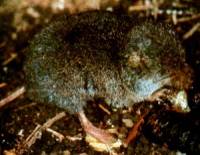
 Eulipotyphlans are insectivorous mammals. Shrews and solenodons closely resemble mice, hedgehogs carry spines, while Mole (animal), moles are stout-bodied burrowers.
*Family: Soricidae (shrews)
**Subfamily: Soricinae
***Tribe: Blarinini
**** Northern short-tailed shrew, ''B. brevicauda''
**** Southern short-tailed shrew, ''B. carolinensis''
**** Sherman's short-tailed shrew, ''B. shermani''
**** Everglades short-tailed shrew, ''B. peninsulae''
**** Elliot's short-tailed shrew, ''B. hylophaga''
**** North American least shrew, ''C. parva''
**** Berlandier's least shrew, ''C. berlandieri''
***Tribe: Notiosoricini
**** Cockrum's gray shrew, ''N. cockrumi''
**** Crawford's gray shrew, ''N. crawfordi''
***** Ticul's gray shrew, ''N. tataticuli''
***Tribe: Soricini
**** Arctic shrew, ''S. arcticus''
**** Arizona shrew, ''S. arizonae''
**** Marsh shrew, ''S. bendirii''
**** Cinereus shrew, ''S. cinereus''
***** Maryland shrew, ''S. fontinalis''
**** Long-tailed shrew, ''S. dispar''
***** Gaspé shrew, ''S. gaspensis''
**** Smoky shrew, ''S. fumeus''
**** Prairie shrew, ''S. haydeni''
**** American pygmy shrew, ''S. hoyi''
***** Western pygmy shrew, ''S. eximius''
**** Pribilof Island shrew, ''S. pribilofensis'' (
Eulipotyphlans are insectivorous mammals. Shrews and solenodons closely resemble mice, hedgehogs carry spines, while Mole (animal), moles are stout-bodied burrowers.
*Family: Soricidae (shrews)
**Subfamily: Soricinae
***Tribe: Blarinini
**** Northern short-tailed shrew, ''B. brevicauda''
**** Southern short-tailed shrew, ''B. carolinensis''
**** Sherman's short-tailed shrew, ''B. shermani''
**** Everglades short-tailed shrew, ''B. peninsulae''
**** Elliot's short-tailed shrew, ''B. hylophaga''
**** North American least shrew, ''C. parva''
**** Berlandier's least shrew, ''C. berlandieri''
***Tribe: Notiosoricini
**** Cockrum's gray shrew, ''N. cockrumi''
**** Crawford's gray shrew, ''N. crawfordi''
***** Ticul's gray shrew, ''N. tataticuli''
***Tribe: Soricini
**** Arctic shrew, ''S. arcticus''
**** Arizona shrew, ''S. arizonae''
**** Marsh shrew, ''S. bendirii''
**** Cinereus shrew, ''S. cinereus''
***** Maryland shrew, ''S. fontinalis''
**** Long-tailed shrew, ''S. dispar''
***** Gaspé shrew, ''S. gaspensis''
**** Smoky shrew, ''S. fumeus''
**** Prairie shrew, ''S. haydeni''
**** American pygmy shrew, ''S. hoyi''
***** Western pygmy shrew, ''S. eximius''
**** Pribilof Island shrew, ''S. pribilofensis'' (



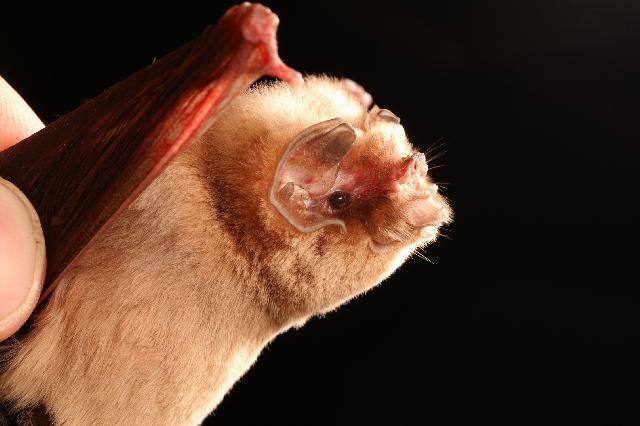
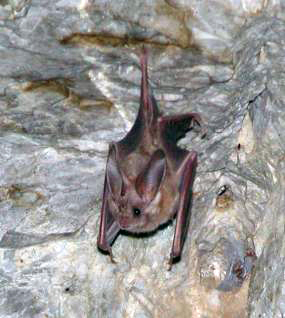 The bats' most distinguishing feature is that their forelimbs are developed as wings, making them the only mammals capable of flight. Bat species account for about 20% of all mammals.
*Family: Vespertilionidae
**Subfamily: Myotinae
*** Silver-haired bat, ''L. noctivagans''
*** Southwestern myotis, ''M. auriculus''
*** Southeastern myotis, ''M. austroriparius''
*** California myotis, ''M. californicus''
*** Western small-footed myotis, ''M. ciliolabrum''
*** Dark-nosed small-footed myotis, ''M. melanorhinus''
*** Long-eared myotis, ''M. evotis''
*** Gray bat, ''M. grisescens''
*** Keen's myotis, ''M. keenii''
*** Eastern small-footed myotis, ''M. leibii''
*** Little brown bat, ''M. lucifugus''
*** Arizona myotis, ''M. occultus''
*** Northern long-eared myotis, ''M. septentrionalis''
*** Indiana bat, ''M. sodalis''
*** Fringed myotis, ''M. thysanodes''
*** Cave myotis, ''M. velifer''
*** Long-legged myotis, ''M. volans''
*** Yuma myotis, ''M. yumanensis''
**Subfamily: Vespertilioninae
*** Pallid bat, ''A. pallidus''
*** Big brown bat, ''E. fuscus''
*** Spotted bat, ''E. maculatum''
*** Allen's big-eared bat, ''I. phyllotis''
*** Eastern red bat, ''L. borealis''
*** Hoary bat, ''A. cinereus''
**** Hawaiian hoary bat, ''A. semotus'' (Hawaii only)
*** Southern yellow bat, ''L. ega''
*** Desert red bat, ''L. frantzii''
*** Seminole bat, ''L. seminolus''
*** Southern yellow bat, ''D. ega''
*** Northern yellow bat, ''D. intermedius''
*** Western yellow bat, ''D. xanthinus''
*** Evening bat, ''N. humeralis''
*** Western pipistrelle, ''P. hesperus''
*** Eastern pipistrelle, ''P. subflavus''
*** Rafinesque's big-eared bat, ''P. rafinesquii''
*** Townsend's big-eared bat, ''P. townsendii''
The bats' most distinguishing feature is that their forelimbs are developed as wings, making them the only mammals capable of flight. Bat species account for about 20% of all mammals.
*Family: Vespertilionidae
**Subfamily: Myotinae
*** Silver-haired bat, ''L. noctivagans''
*** Southwestern myotis, ''M. auriculus''
*** Southeastern myotis, ''M. austroriparius''
*** California myotis, ''M. californicus''
*** Western small-footed myotis, ''M. ciliolabrum''
*** Dark-nosed small-footed myotis, ''M. melanorhinus''
*** Long-eared myotis, ''M. evotis''
*** Gray bat, ''M. grisescens''
*** Keen's myotis, ''M. keenii''
*** Eastern small-footed myotis, ''M. leibii''
*** Little brown bat, ''M. lucifugus''
*** Arizona myotis, ''M. occultus''
*** Northern long-eared myotis, ''M. septentrionalis''
*** Indiana bat, ''M. sodalis''
*** Fringed myotis, ''M. thysanodes''
*** Cave myotis, ''M. velifer''
*** Long-legged myotis, ''M. volans''
*** Yuma myotis, ''M. yumanensis''
**Subfamily: Vespertilioninae
*** Pallid bat, ''A. pallidus''
*** Big brown bat, ''E. fuscus''
*** Spotted bat, ''E. maculatum''
*** Allen's big-eared bat, ''I. phyllotis''
*** Eastern red bat, ''L. borealis''
*** Hoary bat, ''A. cinereus''
**** Hawaiian hoary bat, ''A. semotus'' (Hawaii only)
*** Southern yellow bat, ''L. ega''
*** Desert red bat, ''L. frantzii''
*** Seminole bat, ''L. seminolus''
*** Southern yellow bat, ''D. ega''
*** Northern yellow bat, ''D. intermedius''
*** Western yellow bat, ''D. xanthinus''
*** Evening bat, ''N. humeralis''
*** Western pipistrelle, ''P. hesperus''
*** Eastern pipistrelle, ''P. subflavus''
*** Rafinesque's big-eared bat, ''P. rafinesquii''
*** Townsend's big-eared bat, ''P. townsendii''
(''P. t. virginianus'': , ''P. t. ingens'': ) *Family: Molossidae ** Wagner's bonneted bat, ''E. glaucinus'' ** Eumops floridanus, Florida bonneted bat, ''E. floridanus'' ** Western mastiff bat, ''E. perotis'' ** Underwood's bonneted bat, ''E. underwoodi'' ** Velvety free-tailed bat, ''M. molossus'' ** Pocketed free-tailed bat, ''N. femorosaccus'' ** Big free-tailed bat, ''N. macrotis'' ** Mexican free-tailed bat, ''T. brasiliensis'' *Family: Mormoopidae ** Ghost-faced bat, ''M. megalophylla'' *Family: Phyllostomidae **Subfamily: Phyllostominae *** California leaf-nosed bat, ''M. californicus'' **Subfamily: Glossophaginae *** Mexican long-tongued bat, ''C. mexicana'' *** Lesser long-nosed bat, ''L. yerbabuenae'' *** Greater long-nosed bat, ''L. nivalis'' **Subfamily: Stenodermatinae *** Velvety fruit-eating bat, ''E. hartii'' **Subfamily: Desmodontinae *** Hairy-legged vampire bat, ''D. ecaudata''






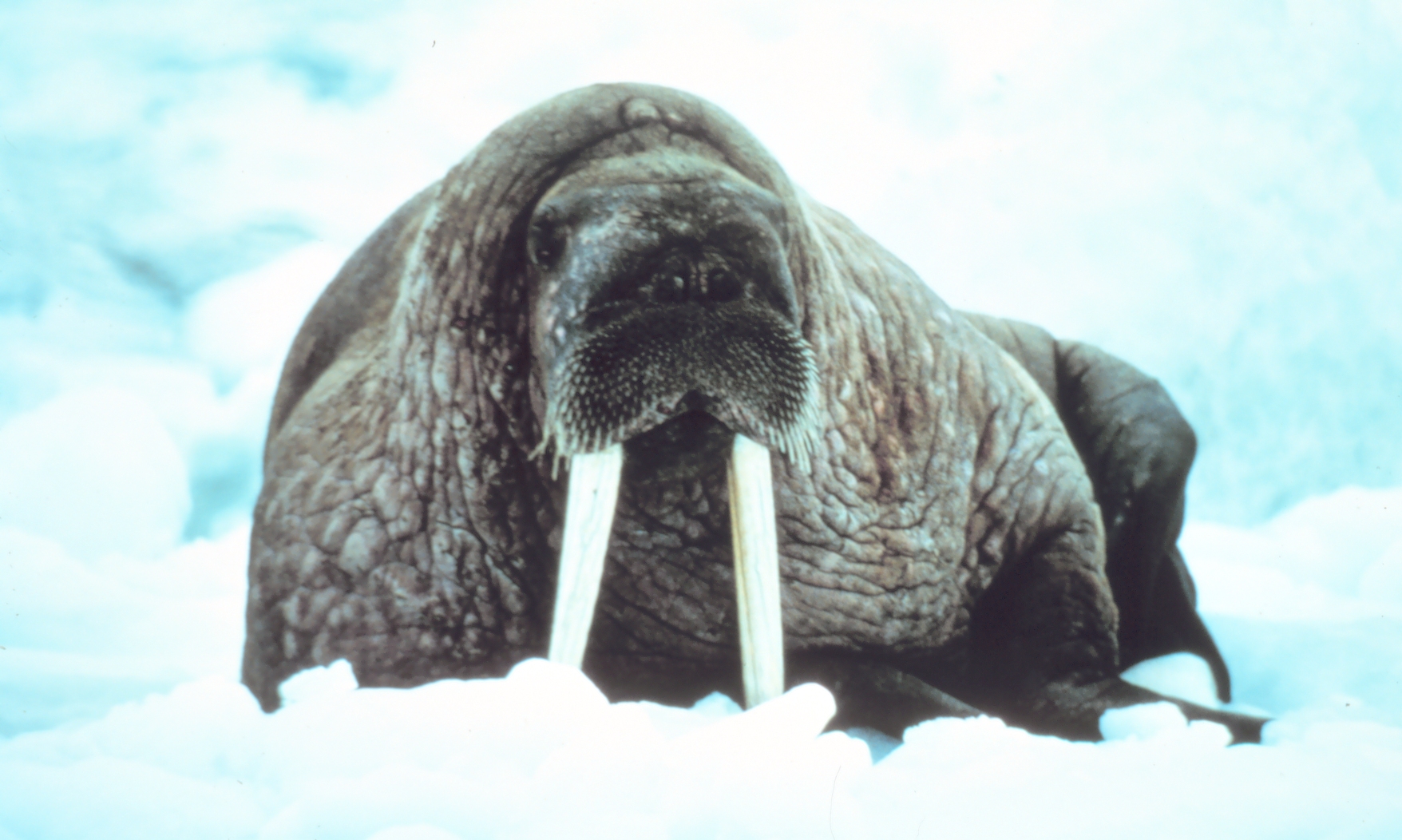
 There are over 260 species of carnivorans, the majority of which feed primarily on meat. They have a characteristic skull shape and dentition.
*Suborder: Feliformia
**Family: Felidae (cats)
*** Jaguarundi, ''H. yagouaroundi'' (Gulf Coast jaguarundi: )
*** Ocelot, ''L. pardalis''
*** Margay, ''L. wiedii'' (Ex?)
*** Canada lynx, ''L. canadensis''
*** Bobcat, ''L. rufus''
*** North American cougar, Cougar, ''P. concolor''
*** Jaguar, ''P. onca''
*Suborder: Caniformia
**Family: Canidae (dogs)
*** Coyote, ''C. latrans''
*** Gray wolf, ''C. lupus'' (Arctic wolf, ''C. l. arctors'' : )
*** Eastern wolf, ''C. lycaon''
*** Red wolf, ''C. rufus'' (and )
*** Gray fox, ''U. cinereoargenteus''
*** Island fox, ''U. littoralis''
There are over 260 species of carnivorans, the majority of which feed primarily on meat. They have a characteristic skull shape and dentition.
*Suborder: Feliformia
**Family: Felidae (cats)
*** Jaguarundi, ''H. yagouaroundi'' (Gulf Coast jaguarundi: )
*** Ocelot, ''L. pardalis''
*** Margay, ''L. wiedii'' (Ex?)
*** Canada lynx, ''L. canadensis''
*** Bobcat, ''L. rufus''
*** North American cougar, Cougar, ''P. concolor''
*** Jaguar, ''P. onca''
*Suborder: Caniformia
**Family: Canidae (dogs)
*** Coyote, ''C. latrans''
*** Gray wolf, ''C. lupus'' (Arctic wolf, ''C. l. arctors'' : )
*** Eastern wolf, ''C. lycaon''
*** Red wolf, ''C. rufus'' (and )
*** Gray fox, ''U. cinereoargenteus''
*** Island fox, ''U. littoralis''
(''U. l. littoralis'': , ''U. l. catalinae'': , ''U. l. santarosae'': , ''U. l. santacruzae'': ) *** Arctic fox, ''V. lagopus'' (
(Louisiana black bear, ''U. a. luteolus'': ) *** Brown bear, ''U. arctos''
(Grizzly bear, ''Ursus arctos horribilis'': , California grizzly bear, ''Ursus arctos californicus'': ) *** Polar bear, ''U. maritimus'' (




 The even-toed ungulates are ungulates whose weight is borne about equally by the third and fourth toes, rather than mostly or entirely by the third as in perissodactyls. There are about 220 artiodactyl species, including many that are of great economic importance to humans.
*Family: Tayassuidae (peccaries)
** Collared peccary, ''D. tajacu''
*Family: Cervidae (deer)
**Subfamily: Cervinae
*** Elk, ''C. canadensis''
**Subfamily: Capreolinae
*** Moose, ''A. alces''
*** Mule deer, ''O. hemionus''
*** White-tailed deer, ''O. virginianus'' (Odocoileus virginianus leucurus, Columbian white-tailed deer, ''O. v. leucurus'': , Odocoileus virginianus clavium, Key deer, ''O. v. clavium'': )
*** Caribou, ''R. tarandus'' (
The even-toed ungulates are ungulates whose weight is borne about equally by the third and fourth toes, rather than mostly or entirely by the third as in perissodactyls. There are about 220 artiodactyl species, including many that are of great economic importance to humans.
*Family: Tayassuidae (peccaries)
** Collared peccary, ''D. tajacu''
*Family: Cervidae (deer)
**Subfamily: Cervinae
*** Elk, ''C. canadensis''
**Subfamily: Capreolinae
*** Moose, ''A. alces''
*** Mule deer, ''O. hemionus''
*** White-tailed deer, ''O. virginianus'' (Odocoileus virginianus leucurus, Columbian white-tailed deer, ''O. v. leucurus'': , Odocoileus virginianus clavium, Key deer, ''O. v. clavium'': )
*** Caribou, ''R. tarandus'' (
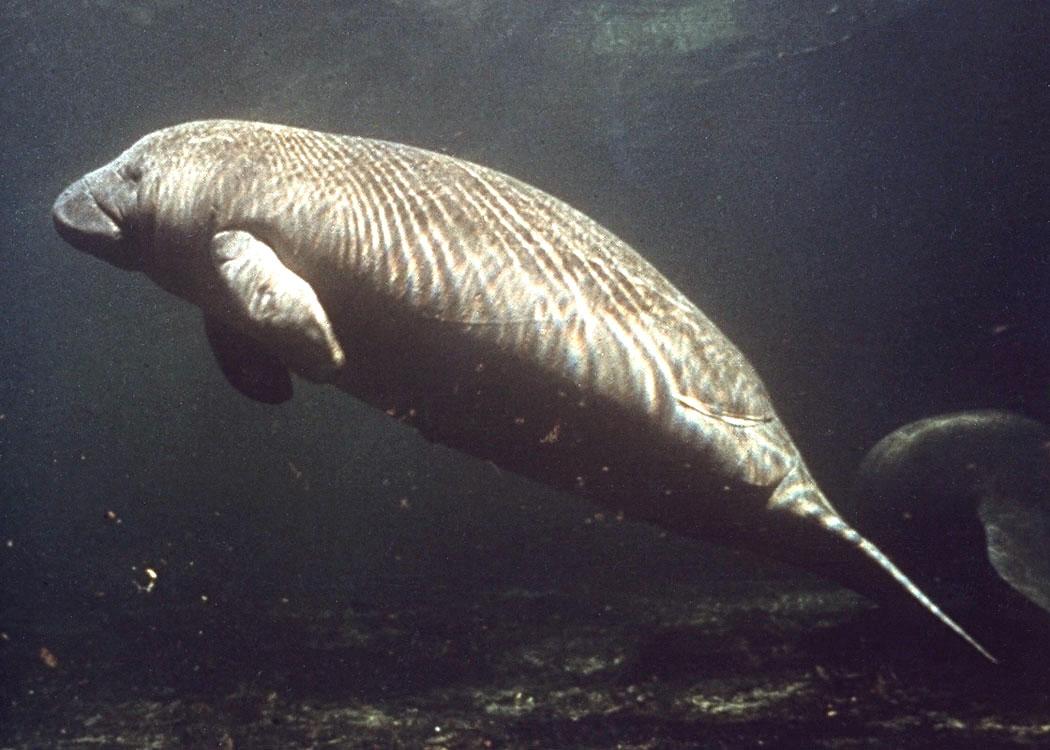 Sirenia is an order of fully aquatic, herbivorous mammals that inhabit rivers, estuaries, coastal marine waters, swamps, and marine wetlands.
*Family: Dugongidae
** Steller's sea cow, ''H. gigas'' (
Sirenia is an order of fully aquatic, herbivorous mammals that inhabit rivers, estuaries, coastal marine waters, swamps, and marine wetlands.
*Family: Dugongidae
** Steller's sea cow, ''H. gigas'' (
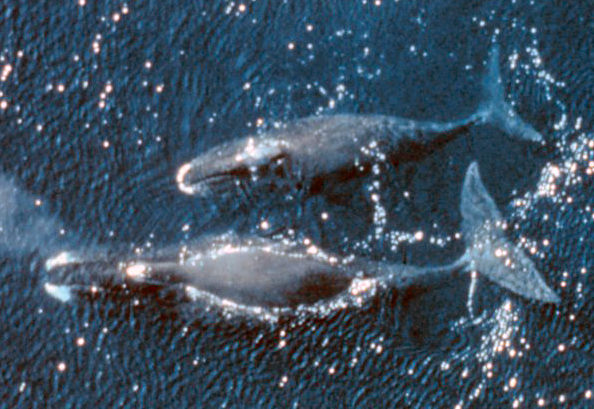
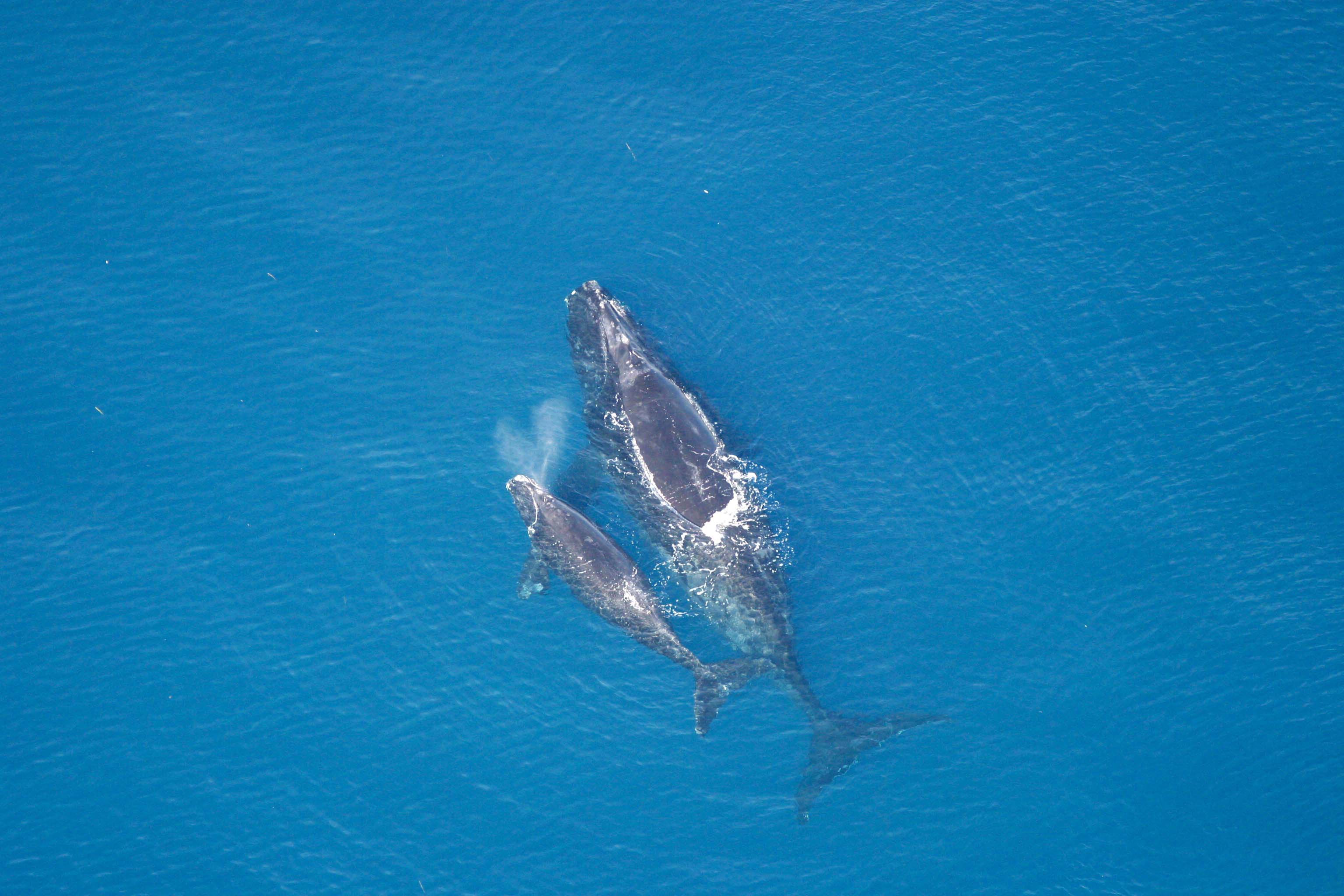


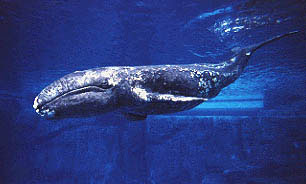


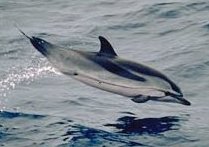

 The order Cetacea includes whales, dolphins and porpoises. They are the mammals most fully aquatic adaptation, adapted to aquatic life with a spindle-shaped nearly hairless body, protected by a thick layer of blubber, and forelimbs and tail modified to provide propulsion underwater.
*Suborder: Mysticeti
**Family: Balaenidae
*** Bowhead whale, ''B. mysticetus'' (
The order Cetacea includes whales, dolphins and porpoises. They are the mammals most fully aquatic adaptation, adapted to aquatic life with a spindle-shaped nearly hairless body, protected by a thick layer of blubber, and forelimbs and tail modified to provide propulsion underwater.
*Suborder: Mysticeti
**Family: Balaenidae
*** Bowhead whale, ''B. mysticetus'' (
(Northeast Pacific subpopulation: ) **Family: Balaenopteridae *** Common minke whale, ''B. acutorostrata'' *** Sei whale, ''B. borealis'' *** Bryde's whale, Eden's whale, ''B. edeni'' **** Bryde's whale, ''B. brydei'' *** Rice's whale, ''B. ricei'' *** Blue whale, ''B. musculus'' (''B. m. musculus'' North Pacific stock: ) *** Fin whale, ''B. physalus'' *** Humpback whale, ''M. novaeangliae'' *** Gray whale, ''E. robustus'' *Suborder: Odontoceti **Superfamily: Platanistoidea ***Family: Monodontidae **** Beluga whale, Beluga, ''D. leucas'' (Cook Inlet subpopulation: ) **** Narwhal, ''M. monoceros'' (
American Society of Mammalogists
- i.e. printable Field Guide to mammals of North America
Search the Division of Mammals Collections
- National Museum of Natural History, Smithsonian Institution
Mammal Species of the World, 3rd edition (MSW3)
- database of mammalian taxonomy
IUCN Red List of Threatened SpeciesSearch results
mammalia, USA, 2014-03-29)
Endangered Species Program - US Fish & Wildlife ServiceSpecies Search - US Fish & Wildlife ServiceEndangered Species Act - National Marine Fisheries Service - NOAA
List of Endangered and threatened wildlife
- US Government Printing Office {{DEFAULTSORT:List Of Mammals Of The United States Lists of mammals of the United States,
mammals
A mammal () is a vertebrate animal of the class Mammalia (). Mammals are characterised by the presence of milk-producing mammary glands for feeding their young, a broad neocortex region of the brain, fur or hair, and three middle e ...
are recorded in the United States. Unincorporated territories such as Puerto Rico
; abbreviated PR), officially the Commonwealth of Puerto Rico, is a Government of Puerto Rico, self-governing Caribbean Geography of Puerto Rico, archipelago and island organized as an Territories of the United States, unincorporated territo ...
, Guam
Guam ( ; ) is an island that is an Territories of the United States, organized, unincorporated territory of the United States in the Micronesia subregion of the western Pacific Ocean. Guam's capital is Hagåtña, Guam, Hagåtña, and the most ...
or Northern Mariana Islands
The Northern Mariana Islands, officially the Commonwealth of the Northern Mariana Islands (CNMI), is an Territories of the United States, unincorporated territory and Commonwealth (U.S. insular area), commonwealth of the United States consistin ...
are not covered. Mammals introduced and extinct in the Holocene except Pleistocene
The Pleistocene ( ; referred to colloquially as the ''ice age, Ice Age'') is the geological epoch (geology), epoch that lasted from to 11,700 years ago, spanning the Earth's most recent period of repeated glaciations. Before a change was fin ...
/Holocene
The Holocene () is the current geologic time scale, geological epoch, beginning approximately 11,700 years ago. It follows the Last Glacial Period, which concluded with the Holocene glacial retreat. The Holocene and the preceding Pleistocene to ...
boundary are included.
According to the IUCN Red List
The International Union for Conservation of Nature (IUCN) Red List of Threatened Species, also known as the IUCN Red List or Red Data Book, founded in 1964, is an inventory of the global conservation status and extinction risk of biological ...
3 of these species are critically endangered
An IUCN Red List critically endangered (CR or sometimes CE) species is one that has been categorized by the International Union for Conservation of Nature as facing an extremely high risk of extinction in the wild. As of December 2023, of t ...
, 20 endangered
An endangered species is a species that is very likely to become extinct in the near future, either worldwide or in a particular political jurisdiction. Endangered species may be at risk due to factors such as habitat loss, poaching, inv ...
, 15 vulnerable, 20 near threatened
A near-threatened species is a species which has been Conservation status, categorized as "Near Threatened" (NT) by the International Union for Conservation of Nature (IUCN) as that may be vulnerable to Endangered species, endangerment in the ne ...
and 4 extinct
Extinction is the termination of an organism by the death of its Endling, last member. A taxon may become Functional extinction, functionally extinct before the death of its last member if it loses the capacity to Reproduction, reproduce and ...
.
Some species are identified as indicated below:
*(A) - Accidental
*(E) - Extinct
Extinction is the termination of an organism by the death of its Endling, last member. A taxon may become Functional extinction, functionally extinct before the death of its last member if it loses the capacity to Reproduction, reproduce and ...
*(Ex) - Extirpated
Local extinction, also extirpation, is the termination of a species (or other taxon) in a chosen geographic area of study, though it still exists elsewhere. Local extinctions are contrasted with global extinctions.
Local extinctions mark a chan ...
(extinct in the US, but exists elsewhere in the world)
*(I) - Introduced
The following tags are used to highlight each species' conservation status as assessed by the International Union for Conservation of Nature
The International Union for Conservation of Nature (IUCN) is an international organization working in the field of nature conservation and sustainable use of natural resources. Founded in 1948, IUCN has become the global authority on the stat ...
:
(v. 2013.2, the data is current as of March 5, 2014)
and the Endangered Species Act
The Endangered Species Act of 1973 (ESA; 16 U.S.C. § 1531 et seq.) is the primary law in the United States for protecting and conserving imperiled species. Designed to protect critically imperiled species from extinction as a "consequence of e ...
:
(the data is current as of March 28, 2014)
Subclass: Theria
Infraclass: Metatheria
Order: Didelphimorphia (common opossums)
 Didelphimorphia is the order of common opossums of the
Didelphimorphia is the order of common opossums of the Western Hemisphere
The Western Hemisphere is the half of the planet Earth that lies west of the Prime Meridian (which crosses Greenwich, London, United Kingdom) and east of the 180th meridian.- The other half is called the Eastern Hemisphere. Geopolitically, ...
. Opossums probably diverged from the basic South America
South America is a continent entirely in the Western Hemisphere and mostly in the Southern Hemisphere, with a considerably smaller portion in the Northern Hemisphere. It can also be described as the southern Subregion#Americas, subregion o ...
n marsupial
Marsupials are a diverse group of mammals belonging to the infraclass Marsupialia. They are natively found in Australasia, Wallacea, and the Americas. One of marsupials' unique features is their reproductive strategy: the young are born in a r ...
s in the late Cretaceous
The Cretaceous ( ) is a geological period that lasted from about 143.1 to 66 mya (unit), million years ago (Mya). It is the third and final period of the Mesozoic Era (geology), Era, as well as the longest. At around 77.1 million years, it is the ...
or early Paleocene
The Paleocene ( ), or Palaeocene, is a geological epoch (geology), epoch that lasted from about 66 to 56 mya (unit), million years ago (mya). It is the first epoch of the Paleogene Period (geology), Period in the modern Cenozoic Era (geology), ...
. They are small to medium-sized marsupials, about the size of a large house cat
The cat (''Felis catus''), also referred to as the domestic cat or house cat, is a small domesticated carnivorous mammal. It is the only domesticated species of the family Felidae. Advances in archaeology and genetics have shown that the ...
, with a long snout and prehensile
Prehensility is the quality of an appendage or organ that has adapted for grasping or holding. The word is derived from the Latin term ''prehendere'', meaning "to grasp". The ability to grasp is likely derived from a number of different origin ...
tail.
*Family: Didelphidae (American opossums)
**Subfamily: Didelphinae
*** Virginia opossum
The Virginia opossum (''Didelphis virginiana''), also known as the North American opossum, is a member of the opossum family found from southern Canada to northern Costa Rica, making it the northernmost marsupial in the world and the only marsup ...
, ''D. virginiana''
Infraclass: Eutheria
Order: Cingulata (armadillos)
 The armadillos are small mammals with a bony armored shell. They are native to the Americas. There are around 20 extant species. Only the nine-banded armadillo is found in the United States.
*Family: Dasypodidae (armadillos)
**Subfamily: Dasypodinae
***
The armadillos are small mammals with a bony armored shell. They are native to the Americas. There are around 20 extant species. Only the nine-banded armadillo is found in the United States.
*Family: Dasypodidae (armadillos)
**Subfamily: Dasypodinae
*** Nine-banded armadillo
The nine-banded armadillo (''Dasypus novemcinctus''), also called the nine-banded long-nosed armadillo or common long-nosed armadillo, is a species of armadillo native to North America, North, Central America, Central, and South America, making ...
, ''D. novemcinctus''
Order: Rodentia (rodents)











 Rodents make up the largest order of mammals, with over 40% of mammalian species. They have two
Rodents make up the largest order of mammals, with over 40% of mammalian species. They have two incisor
Incisors (from Latin ''incidere'', "to cut") are the front teeth present in most mammals. They are located in the premaxilla above and on the mandible below. Humans have a total of eight (two on each side, top and bottom). Opossums have 18, wher ...
s in the upper and lower jaw which grow continually and must be kept short by gnawing. Most rodents are small though the capybara
The capybara or greater capybara (''Hydrochoerus hydrochaeris'') is the largest living rodent, native to South America. It is a member of the genus '' Hydrochoerus''. The only other extant member is the lesser capybara (''Hydrochoerus isthmi ...
can weigh up to .
*Suborder: Hystricognathi
The Hystricognathi are an infraorder of rodents, distinguished from other rodents by the bone structure of their skulls. The masseter medialis (a jaw muscle) passes partially through a hole below each eye socket (called the infraorbital foramen) ...
**Family: Erethizontidae (New World porcupines)
***Subfamily: Erethizontinae
**** North American porcupine
The North American porcupine (''Erethizon dorsatum''), also known as the Canadian porcupine, is a large quill-covered rodent in the New World porcupine family. It is the second largest rodent in North America after the North American beaver (''Ca ...
, ''E. dorsatum''
*Suborder: Sciurognathi
**Family: Aplodontiidae
The family Aplodontiidae also known as Aplodontidae, Haplodontiidae or Haploodontini is traditionally classified as the sole extant family of the suborder Protrogomorpha. It may be the sister family of the Sciuridae.
There are fossils from the O ...
(mountain beaver)
*** Mountain beaver
The mountain beaver (''Aplodontia rufa'')Other names include boomer, mountain boomer, ground bear, giant mole, gehalis, sewellel, suwellel, showhurll, showtl, and showte, as well as a number of other Native American terms. "Mountain beaver" is a ...
, ''A. rufa'' (''A. r. nigra'': )
**Family: Castoridae
Castoridae is a family of rodents that contains the two living species of beavers and their fossil relatives. A formerly diverse group, only a single genus is extant today, ''beaver, Castor.'' Two other genera of "giant beavers", ''Castoroides'' ...
(beavers)
*** American beaver
The North American beaver (''Castor canadensis'') is one of two extant beaver species, along with the Eurasian beaver (''Castor fiber''). It is native to North America and has been introduced in South America (Patagonia) and Europe (primarily Fi ...
, ''C. canadensis''
**Family: Sciuridae
Squirrels are members of the family Sciuridae (), a family that includes small or medium-sized rodents. The squirrel family includes tree squirrels, ground squirrels (including chipmunks and prairie dogs, among others), and flying squirrel ...
(squirrels)
***Subfamily: Sciurinae
****Tribe: Pteromyini
***** Northern flying squirrel
The northern flying squirrel (''Glaucomys sabrinus'') is one of three species of the genus '' Glaucomys'', the only flying squirrels found in North America.Walker EP, Paradiso JL. 1975. ''Mammals of the World''. Baltimore: Johns Hopkins Universit ...
, ''G. sabrinus'' (Carolina northern flying squirrel ''G. s. coloratus'', Virginia northern flying squirrel ''G. s. fuscus'': ) ***** Humboldt's flying squirrel, ''G. oregonensis'' ***** Southern flying squirrel, ''G. volans'' ****Tribe: Sciurini ***** Abert's squirrel, ''S. aberti'' ***** Arizona gray squirrel, ''S. arizonensis'' ***** Eastern gray squirrel, ''S. carolinensis'' ***** Western gray squirrel, ''S. griseus'' ***** Mexican fox squirrel, ''S. nayaritensis'' *****
Fox squirrel
The fox squirrel (''Sciurus niger''), also known as the eastern fox squirrel or Bryant's fox squirrel, is the largest species of tree squirrel native to North America. It is sometimes mistaken for the American red squirrel or eastern gray squirr ...
, ''S. niger'' ( Delmarva fox squirrel, ''S. n. cinereus'': ) *****
Douglas squirrel
The Douglas squirrel (''Tamiasciurus douglasii'') is a pine squirrel found in western North America, from the Pacific Northwest (including the northwestern coastal states of the United States as well as the southwestern coast of British Columb ...
, ''T. douglasii''
***** Southwestern red squirrel, ''T. fremonti'' (
Mount Graham red squirrel
The Mount Graham red squirrel (''Tamiasciurus fremonti grahamensis'') is an endangered subspecies of the southwestern red squirrel (''Tamiasciurus fremonti'') native to the Pinaleño Mountains of Arizona. It is smaller than most other subspecie ...
, ''T. f. grahamensis'': )
***** American red squirrel
The American red squirrel (''Tamiasciurus hudsonicus'') is one of three species of tree squirrels currently classified in the genus ''Tamiasciurus'', known as the pine squirrels (the others are the Douglas squirrel, ''T. douglasii'', and the sou ...
, ''T. hudsonicus''
***Subfamily: Xerinae
The Xerinae comprise a subfamily of squirrels, many of which are highly terrestrial. It includes the tribes Marmotini (marmots, chipmunks, prairie dogs, and other Holarctic ground squirrels), Xerini (African and some Eurasian ground squirrels), ...
****Tribe: Marmotini
***** Harris's antelope squirrel, ''A. harrisii''
***** Texas antelope squirrel, ''A. interpres''
***** White-tailed antelope squirrel, ''A. leucurus''
***** San Joaquin antelope squirrel, ''A. nelsoni''
***** Gunnison's prairie dog, ''C. gunnisoni''
***** White-tailed prairie dog, ''C. leucurus''
***** Black-tailed prairie dog
The black-tailed prairie dog (''Cynomys ludovicianus'') is a rodent of the family Sciuridae (the squirrels) found in the Great Plains of North America from about the United States–Canada border to the United States–Mexico border. Unlike some ...
, ''C. ludovicianus''
***** Utah prairie dog, ''C. parvidens''
***** Alaska marmot, ''M. broweri'' (Alaska
Alaska ( ) is a non-contiguous U.S. state on the northwest extremity of North America. Part of the Western United States region, it is one of the two non-contiguous U.S. states, alongside Hawaii. Alaska is also considered to be the north ...
only)
***** Hoary marmot, ''M. caligata''
***** Yellow-bellied marmot
The yellow-bellied marmot (''Marmota flaviventer''), also known as the rock chuck, is a large, stout-bodied ground squirrel in the marmot genus. It is one of fourteen species of marmots, and is native to mountainous and semi-arid regions of south ...
, ''M. flaviventris''
***** Groundhog
The groundhog (''Marmota monax''), also known as the woodchuck, is a rodent of the family Sciuridae, belonging to the group of large ground squirrels known as marmots.
A lowland creature of North America, it is found through much of the Easte ...
, ''M. monax''
***** Olympic marmot
The Olympic marmot (''Marmota olympus'') is a rodent in the squirrel family, Sciuridae. It occurs only in the U.S. state of Washington, at the middle elevations of the Olympic Peninsula. The closest relatives of this species are the hoary mar ...
, ''M. olympus''
***** California ground squirrel, ''O. beecheyi''
****** Douglas's ground squirrel, ''O. douglasii''
***** Rock squirrel, ''O. variegatus''
***** Golden-mantled ground squirrel, ''C. lateralis''
***** Cascade golden-mantled ground squirrel, ''C. saturatus''
***** Mohave ground squirrel, ''X. mohavensis''
***** Spotted ground squirrel, ''X. spilosoma''
***** Round-tailed ground squirrel, ''X. tereticaudus''
***** Franklin's ground squirrel, ''P. franklinii''
***** Mexican ground squirrel, ''I. mexicanus''
***** Rio Grande ground squirrel, ''I. parvidens''
***** Thirteen-lined ground squirrel, ''I. tridecemlineatus''
***** Uinta ground squirrel, ''U. armatus''
***** Belding's ground squirrel
Belding's ground squirrel (''Urocitellus beldingi''), also called pot gut, sage rat or picket-pin, is a squirrel that lives on mountains in the Western United States, western United States. In California, it often is found at in meadows between ...
, ''U. beldingi''
***** Northern Idaho ground squirrel, ''U. brunneus''
***** Southern Idaho ground squirrel, ''U. endemicus''
***** Columbian ground squirrel
The Columbian ground squirrel (''Urocitellus columbianus'') is a species of rodent common in certain regions of Canada and the northwestern United States. It is the second largest member of the genus ''Urocitellus'', which is part of the tribe Ma ...
, ''U. columbianus''
***** Wyoming ground squirrel, ''U. elegans''
***** Arctic ground squirrel, ''U. parryii'' (Alaska
Alaska ( ) is a non-contiguous U.S. state on the northwest extremity of North America. Part of the Western United States region, it is one of the two non-contiguous U.S. states, alongside Hawaii. Alaska is also considered to be the north ...
only)
***** Richardson's ground squirrel
Richardson's ground squirrel (''Urocitellus richardsonii''), also known as the dakrat or flickertail, is a North American ground squirrel in the genus ''Urocitellus''. Like a number of other ground squirrels, they are sometimes called prairie dog ...
, ''U. richardsonii''
***** Townsend's ground squirrel, ''U. townsendii''
***** Merriam's ground squirrel, ''U. canus''
***** Piute ground squirrel, ''U. mollis''
***** Washington ground squirrel, ''U. washingtoni''
***** Alpine chipmunk, ''N. alpinus''
***** Yellow-pine chipmunk, ''N. amoenus''
****** Craters of the Moon chipmunk, ''N. cratericus''
***** Gray-footed chipmunk, ''N. canipes''
***** Gray-collared chipmunk, ''N. cinereicollis''
***** Cliff chipmunk, ''N. dorsalis''
***** Merriam's chipmunk, ''N. merriami''
***** Least chipmunk, ''N. minimus''
****** Coulee chipmunk, ''N. grisescens''
***** California chipmunk, ''N. obscurus''
***** Yellow-cheeked chipmunk, ''N. ochrogenys''
***** Palmer's chipmunk, ''N. palmeri''
***** Panamint chipmunk, ''N. panamintinus''
***** Long-eared chipmunk, ''N. quadrimaculatus''
***** Colorado chipmunk, ''N. quadrivittatus''
***** Red-tailed chipmunk, ''N. ruficaudus''
***** Hopi chipmunk, ''N. rufus''
***** Allen's chipmunk, ''N. senex''
***** Siskiyou chipmunk, ''N. siskiyou''
***** Sonoma chipmunk, ''N. sonomae''
***** Lodgepole chipmunk, ''N. speciosus''
***** Eastern chipmunk
The eastern chipmunk (''Tamias striatus'') is a chipmunk species found in eastern North America. It is the only living member of the genus ''Tamias''.
Etymology
The name "chipmunk" probably comes from the Ojibwe word (or possibly ''ajidamoonh ...
, ''T. striatus''
***** Townsend's chipmunk, ''N. townsendii''
***** Uinta chipmunk, ''N. umbrinus''
**Family: Geomyidae
*** Desert pocket gopher, ''G. arenarius''
*** Attwater's pocket gopher, ''G. attwateri''
*** Baird's pocket gopher, ''G. breviceps''
*** Plains pocket gopher, ''G. bursarius''
*** Hall's pocket gopher
''Geomys jugossicularis'', also known as Hall's pocket gopher and Colorado pocket gopher, is a species of pocket gopher native to the western United States (Colorado, Kansas, and Nebraska). Little is known of its behavior or ecology aside from ty ...
, ''G. jugossicularis''
*** Sand Hills pocket gopher, ''G. lutescens''
*** Knox Jones's pocket gopher, ''G. knoxjonesi''
*** Texas pocket gopher, ''G. personatus''
*** Strecker's pocket gopher, ''G. streckeri''
*** Southeastern pocket gopher, ''G. pinetis''
*** Llano pocket gopher, ''G. texensis''
*** Yellow-faced pocket gopher, ''P. castanops''
*** Botta's pocket gopher
Botta's pocket gopher (''Thomomys bottae'') is a pocket gopher native to western North America. It is also known in some areas as valley pocket gopher, particularly in California. Both the specific and common names of this species honor Paul-Émi ...
, ''T. bottae''
*** Camas pocket gopher, ''T. bulbivorus''
*** Wyoming pocket gopher, ''T. clusius''
*** Idaho pocket gopher, ''T. idahoensis''
*** Mazama pocket gopher, ''T. mazama''
*** Mountain pocket gopher, ''T. monticola''
*** Northern pocket gopher, ''T. talpoides''
*** Townsend's pocket gopher, ''T. townsendii''
*** Southern pocket gopher, ''T. umbrinus''
**Family: Heteromyidae
Heteromyidae is a family of rodents consisting of kangaroo rats, kangaroo mice, pocket mice and spiny pocket mice. Most heteromyids live in complex burrows within the deserts and grasslands of western North America, though species within the ...
***Subfamily: Dipodomyinae
Dipodomyinae is a subfamily of heteromyid rodents, the kangaroo rats and mice. Dipodomyines, as implied by both their common and scientific names, are bipedal; they also jump exceptionally well. Kangaroo rats and mice are native to desert and ...
**** Agile kangaroo rat, ''D. agilis''
**** California kangaroo rat, ''D. californicus''
**** Gulf Coast kangaroo rat, ''D. compactus''
**** Desert kangaroo rat, ''D. deserti''
**** Texas kangaroo rat, ''D. elator''
**** Heermann's kangaroo rat, ''D. heermanni'' (
Morro Bay kangaroo rat
The Morro Bay kangaroo rat (''Dipodomys heermanni morroensis)'', is an endangered kangaroo rat, a rodent in the Heteromyidae family. The species is the smallest subspecies of the Heermann's kangaroo rat and is endemic to San Luis Obispo Count ...
, ''D. h. morroensis'': )
**** Giant kangaroo rat, ''D. ingens''
**** Merriam's kangaroo rat, ''D. merriami'' ( San Bernardino kangaroo rat, ''D. m. parvus'': )
**** Chisel-toothed kangaroo rat, ''D. microps''
**** Fresno kangaroo rat, ''D. nitratoides'' (''D. n. exilis'': , Tipton kangaroo rat, ''D. n. nitratoides'': )
**** Ord's kangaroo rat
Ord's kangaroo rat (''Dipodomys ordii'') is a kangaroo rat native to western North America, specifically the Great Plains and the Great Basin, with its range extending from extreme southern Canada to central Mexico.
Ord's kangaroo rat has a fi ...
, ''D. ordii''
**** Panamint kangaroo rat, ''D. panamintinus''
**** Banner-tailed kangaroo rat, ''D. spectabilis''
**** Stephens' kangaroo rat, ''D. stephensi''
**** Dulzura kangaroo rat, ''D. simulans''
**** Narrow-faced kangaroo rat, ''D. venustus''
**** Big-eared kangaroo rat, ''D. elephantinus''
**** Dark kangaroo mouse, ''M. megacephalus''
**** Pale kangaroo mouse
The pale kangaroo mouse or Soda Spring Valley kangaroo mouse (''Microdipodops pallidus'') is a species of rodent in the family Heteromyidae. It is endemic to California and Nevada in the United States.
Description
Named for its pale-furred back ...
, ''M. pallidus''
***Subfamily: Heteromyinae
**** Mexican spiny pocket mouse, ''L. irroratus''
***Subfamily: Perognathinae
**** Bailey's pocket mouse, ''C. baileyi''
**** California pocket mouse, ''Cv californicus''
**** Nelson's pocket mouse, ''C. nelsoni''
**** Chihuahuan pocket mouse, ''C. eremicus''
**** San Diego pocket mouse, ''C. fallax''
**** Long-tailed pocket mouse, ''C. formosus''
**** Hispid pocket mouse, ''C. hispidus''
**** Rock pocket mouse, ''C. intermedius''
**** Desert pocket mouse, ''C. penicillatus''
**** Baja pocket mouse, ''C. rudinoris''
**** Spiny pocket mouse, ''C. spinatus''
**** White-eared pocket mouse, ''P. alticola''
**** Arizona pocket mouse, ''P. amplus''
**** Olive-backed pocket mouse, ''P. fasciatus''
**** Plains pocket mouse, ''P. flavescens''
**** Silky pocket mouse, ''P. flavus''
**** San Joaquin pocket mouse, ''P. inornatus''
**** Little pocket mouse, ''P. longimembris'' (
Pacific pocket mouse
The Pacific pocket mouse, ''Perognathus longimembris pacificus'', is endemic to California. It lives in sandy coastal soils of the coastal sage scrub ecoregion. It eats seeds and some insects. It was believed to be extinct until 1993, when a smal ...
, ''P. l. pacificus'': )
**** Merriam's pocket mouse, ''P. merriami''
**** Columbia Plateau pocket mouse, ''P. parvus''
**Family: Zapodidae
Zapodidae, the jumping mice, is a family of mouse-like rodents in North America and China.
Although mouse-like in general appearance, these rodents are distinguished by their elongated hind limbs, and, typically, by the presence of four pairs o ...
(jumping mice)
*** Woodland jumping mouse, ''N. insignis''
**** Western woodland jumping mouse, ''N. abietorum''
*** Meadow jumping mouse, ''Z. hudsonius'' ( Preble's meadow jumping mouse, ''Z. h. preblei'': ) **** Southern meadow jumping mouse, ''Z. luteus'' ***
Western jumping mouse
The western jumping mouse (''Zapus princeps''), is a species of rodent in the family Zapodidae. It is found in Canada and the United States.
Western jumping mice evolved during the Pleistocene, possibly from the fossil species ''Zapus burti'', w ...
, ''Z. princeps''
**** Oregon jumping mouse, ''Z. oregonus''
**** South Pacific jumping mouse, ''Z. pacificus''
**** North-western jumping mouse, ''Z. saltator''
*** Pacific jumping mouse, ''Z. trinotatus''
**** Central Pacific jumping mouse, ''Z. montanus''
**Family: Cricetidae
The Cricetidae are a family of rodents in the large and complex superfamily Muroidea. It includes true hamsters, voles, lemmings, muskrats, and New World rats and mice. At over 870 species, it is either the largest or second-largest family ...
***Subfamily: Arvicolinae
The Arvicolinae are a subfamily of rodents that includes the voles, lemmings, and muskrats. They are most closely related to the other subfamilies in the Cricetidae (comprising the hamsters and New World rats and mice). Some authorities plac ...
**** White-footed vole, ''A. albipes''
**** Red tree vole, ''A. longicaudus''
**** California red tree mouse, ''A. pomo''
**** Western red-backed vole, ''C. californicus''
**** Southern red-backed vole, ''C. gapperi''
**** Northern red-backed vole, ''C. rutilus'' (Alaska
Alaska ( ) is a non-contiguous U.S. state on the northwest extremity of North America. Part of the Western United States region, it is one of the two non-contiguous U.S. states, alongside Hawaii. Alaska is also considered to be the north ...
only)
**** Northern collared lemming
The northern collared lemming or Nearctic collared lemming (''Dicrostonyx groenlandicus''), sometimes called the Peary Land collared lemming in Canada, is a small lemming found in Arctic North America and Wrangel Island. At one time, it was cons ...
, ''D. groenlandicus'' (Alaska
Alaska ( ) is a non-contiguous U.S. state on the northwest extremity of North America. Part of the Western United States region, it is one of the two non-contiguous U.S. states, alongside Hawaii. Alaska is also considered to be the north ...
only)
**** Nelson's collared lemming
Nelson's collared lemming (''Dicrostonyx nelsoni'') is a species of rodent in the family Cricetidae.
It is found in western and southwestern Alaska in the United States
The United States of America (USA), also known as the United States ( ...
, ''D. nelsoni'' (Alaska
Alaska ( ) is a non-contiguous U.S. state on the northwest extremity of North America. Part of the Western United States region, it is one of the two non-contiguous U.S. states, alongside Hawaii. Alaska is also considered to be the north ...
only)
**** Unalaska collared lemming
The Unalaska collared lemming (''Dicrostonyx unalascensis'') is a species of rodent in the family Cricetidae.
This species is found on two islands, Umnak and Unalaska, in the Aleutian Archipelago of Alaska in the United States.
Its natural hab ...
, ''D. unalascensis'' (Alaska
Alaska ( ) is a non-contiguous U.S. state on the northwest extremity of North America. Part of the Western United States region, it is one of the two non-contiguous U.S. states, alongside Hawaii. Alaska is also considered to be the north ...
only)
**** Sagebrush vole, ''L. curtatus''
**** Nearctic brown lemming, ''L. trimucronatus'' (Alaska
Alaska ( ) is a non-contiguous U.S. state on the northwest extremity of North America. Part of the Western United States region, it is one of the two non-contiguous U.S. states, alongside Hawaii. Alaska is also considered to be the north ...
only)
**** Beringian brown lemming, ''L. nigripes''
**** Insular vole, ''M. abbreviatus'' (Alaska
Alaska ( ) is a non-contiguous U.S. state on the northwest extremity of North America. Part of the Western United States region, it is one of the two non-contiguous U.S. states, alongside Hawaii. Alaska is also considered to be the north ...
only)
**** Singing vole, ''M. miurus'' (Alaska
Alaska ( ) is a non-contiguous U.S. state on the northwest extremity of North America. Part of the Western United States region, it is one of the two non-contiguous U.S. states, alongside Hawaii. Alaska is also considered to be the north ...
only)
**** California vole, ''M. californicus'' (''M. c. scirpen'': )
**** Gray-tailed vole, ''M. canicaudus''
**** Rock vole, ''M. chrotorrhinus''
**** Western meadow vole, ''M. drummondii''
**** Florida salt marsh vole, ''M. dukecampbelli'' (''M. p. dukecampbelli'': )
**** Long-tailed vole, ''M. longicaudus''
**** Mexican vole, ''M. mexicanus'' (''M. m. hualpaiensis'': ) ***** Mogollon vole, ''M. mogollonensis'' ****
Montane vole
The montane vole (''Microtus montanus'') is a species of vole native to the western United States and Canada.
Description
Montane voles are medium-sized voles, with a total length of , including the tail. Adults typically weigh anything from , ...
, ''M. montanus''
**** Prairie vole
The prairie vole (''Microtus ochrogaster'') is a small vole found in central North America.
Description
The vole has long, coarse grayish-brown fur on the upper portion of the body and yellowish fur on the lower portion of the body. It has sh ...
, ''M. ochrogaster''
**** Tundra vole, ''M. oeconomus'' (Alaska
Alaska ( ) is a non-contiguous U.S. state on the northwest extremity of North America. Part of the Western United States region, it is one of the two non-contiguous U.S. states, alongside Hawaii. Alaska is also considered to be the north ...
only)
**** Creeping vole, ''M. oregoni''
**** Eastern meadow vole
The eastern meadow vole (''Microtus pennsylvanicus''), sometimes called the field mouse or meadow mouse, is a North American vole found in eastern Canada and the United States. Its range extends farther south along the Atlantic coast.
The weste ...
, ''M. pennsylvanicus''
***** Beach vole, ''M. p. breweri''
**** Woodland vole, ''M. pinetorum''
**** Water vole, ''M. richardsoni''
**** Townsend's vole, ''M. townsendii''
**** Taiga vole, ''M. xanthognathus'' (Alaska
Alaska ( ) is a non-contiguous U.S. state on the northwest extremity of North America. Part of the Western United States region, it is one of the two non-contiguous U.S. states, alongside Hawaii. Alaska is also considered to be the north ...
only)
**** Round-tailed muskrat
The round-tailed muskrat (''Neofiber alleni'') is a species of rodent in the family Cricetidae, sometimes called the Florida water rat.Muskrat
The muskrat or common muskrat (''Ondatra zibethicus'') is a medium-sized semiaquatic rodent native to North America and an introduced species in parts of Europe, Asia, and South America.
The muskrat is found in wetlands over various climates ...
, ''O. zibethicus''
**** Western heather vole, ''P. intermedius''
**** Eastern heather vole, ''P. ungava''
**** Northern bog lemming, ''S. borealis''
**** Southern bog lemming, ''S. cooperi''
***Subfamily: Neotominae
The Neotominae are a subfamily of the family Cricetidae. They consist of four tribes, 16 genera, and many species of New World rats and mice, predominantly found in North America. Among them are the well-known deer mice, packrats, and grasshopp ...
**** Northern pygmy mouse, ''B. taylori''
**** White-throated woodrat, ''N. albigula''
**** Bryant's woodrat, ''N. bryanti''
**** Bushy-tailed woodrat, ''N. cinerea''
**** Arizona woodrat, ''N. devia''
**** Eastern woodrat, ''N. floridana'' (Neotoma floridana smalli, Key Largo woodrat, ''N. f. smalli'': )
**** Dusky-footed woodrat, ''N. fuscipes'' (''N. f. riparia'': )
**** Desert woodrat, ''N. lepida''
**** White-toothed woodrat, ''Nv leucodon''
**** Big-eared woodrat, ''N. macrotis''
**** Allegheny woodrat, ''N. magister''
**** Mexican woodrat, ''N. mexicana''
**** Southern plains woodrat, ''N. micropus''
**** Stephen's woodrat, ''N. stephensi''
**** Golden mouse, ''O. nuttalli''
**** Texas mouse, ''P. attwateri''
**** Brush mouse, ''P. boylii''
**** California mouse, ''P. californicus''
**** Canyon mouse, ''P. crinitus''
**** Cactus mouse, ''P. eremicus''
**** Northern Baja deer mouse, ''P. fraterculus''
**** Cotton mouse, ''P. gossypinus'' (''P. g. allapaticola'': )
**** Gambel's deer mouse, ''P. gambelii''
**** Osgood's mouse, ''P. gratus''
**** Northwestern deer mouse, ''P. keeni''
**** White-ankled mouse, ''P. pectoralis''
**** Southern deer mouse, ''P. labecula''
**** White-footed mouse, ''P. leucopus''
**** Eastern deer mouse, ''P. maniculatus''
**** Black-eared mouse, ''P. melanotis''
**** Mesquite mouse, ''P. merriami''
**** Northern rock mouse, ''P. nasutus''
**** Oldfield mouse, ''P. polionotus'' (Choctawhatchee beach mouse, ''P. p. allophrys'': , Perdido Key beach mouse, ''P. p. trissyllepsis'': , Oldfield mouse, St. Andrews beach mouse, ''P. p. peninsularis'': , Alabama beach mouse, ''P. p. ammobates'': , Anastasia Island beach mouse, ''P. p. phasma'': , Oldfield mouse, Southeastern beach mouse, ''P. p. niveiventris'': )
**** Western deer mouse, Western deermouse, ''P. sonoriensis''
**** Pinyon mouse, ''P. truei''
**** Florida mouse, ''P. floridanus''
**** Fulvous harvest mouse, ''R. fulvescens''
**** Eastern harvest mouse, ''R. humulis''
**** Western harvest mouse, ''R. megalotis''
**** Plains harvest mouse, ''R. montanus''
**** Salt marsh harvest mouse, ''R. raviventris''
***Subfamily: Sigmodontinae
**** Chihuahuan grasshopper mouse, ''O. arenicola''
**** Northern grasshopper mouse, ''O. leucogaster''
**** Southern grasshopper mouse, ''O. torridus''
**** Oryzomys couesi, Coues' rice rat, ''O. couesi''
**** Marsh rice rat, ''O. palustris'' (''O. p. natator'': )
**** Arizona cotton rat, ''S. arizonae''
**** Tawny-bellied cotton rat, ''S. fulviventer''
**** Hispid cotton rat, ''S. hispidus''
**** Yellow-nosed cotton rat, ''S. ochrognathus''
Order: Lagomorpha (lagomorphs)


Alaska
Alaska ( ) is a non-contiguous U.S. state on the northwest extremity of North America. Part of the Western United States region, it is one of the two non-contiguous U.S. states, alongside Hawaii. Alaska is also considered to be the north ...
only)
** American pika, ''O. princeps''
*Family: Leporidae (rabbits, hares)
** Pygmy rabbit, ''B. idahoensis''
** Antelope jackrabbit, ''L. alleni''
** Snowshoe hare, ''L. americanus''
** Black-tailed jackrabbit, ''L. californicus''
** White-sided jackrabbit, ''L. callotis''
** Alaskan hare, ''L. othus'' (Alaska
Alaska ( ) is a non-contiguous U.S. state on the northwest extremity of North America. Part of the Western United States region, it is one of the two non-contiguous U.S. states, alongside Hawaii. Alaska is also considered to be the north ...
only)
** White-tailed jackrabbit, ''L. townsendii''
** Swamp rabbit, ''S. aquaticus''
** Desert cottontail, ''S. audubonii''
** Brush rabbit, ''S. bachmani'' (ssp. ''riparius'': )
** Eastern cottontail, ''S. floridanus''
** Robust cottontail, ''S. holzneri''
** Mountain cottontail, ''S. nuttallii''
** Marsh rabbit, ''S. palustris'' (Sylvilagus palustris hefneri, Lower Keys marsh rabbit, ''S. p. hefneri'': )
** New England cottontail, ''S. transitionalis''
Order: Eulipotyphla (shrews, hedgehogs, moles, and solenodons)


 Eulipotyphlans are insectivorous mammals. Shrews and solenodons closely resemble mice, hedgehogs carry spines, while Mole (animal), moles are stout-bodied burrowers.
*Family: Soricidae (shrews)
**Subfamily: Soricinae
***Tribe: Blarinini
**** Northern short-tailed shrew, ''B. brevicauda''
**** Southern short-tailed shrew, ''B. carolinensis''
**** Sherman's short-tailed shrew, ''B. shermani''
**** Everglades short-tailed shrew, ''B. peninsulae''
**** Elliot's short-tailed shrew, ''B. hylophaga''
**** North American least shrew, ''C. parva''
**** Berlandier's least shrew, ''C. berlandieri''
***Tribe: Notiosoricini
**** Cockrum's gray shrew, ''N. cockrumi''
**** Crawford's gray shrew, ''N. crawfordi''
***** Ticul's gray shrew, ''N. tataticuli''
***Tribe: Soricini
**** Arctic shrew, ''S. arcticus''
**** Arizona shrew, ''S. arizonae''
**** Marsh shrew, ''S. bendirii''
**** Cinereus shrew, ''S. cinereus''
***** Maryland shrew, ''S. fontinalis''
**** Long-tailed shrew, ''S. dispar''
***** Gaspé shrew, ''S. gaspensis''
**** Smoky shrew, ''S. fumeus''
**** Prairie shrew, ''S. haydeni''
**** American pygmy shrew, ''S. hoyi''
***** Western pygmy shrew, ''S. eximius''
**** Pribilof Island shrew, ''S. pribilofensis'' (
Eulipotyphlans are insectivorous mammals. Shrews and solenodons closely resemble mice, hedgehogs carry spines, while Mole (animal), moles are stout-bodied burrowers.
*Family: Soricidae (shrews)
**Subfamily: Soricinae
***Tribe: Blarinini
**** Northern short-tailed shrew, ''B. brevicauda''
**** Southern short-tailed shrew, ''B. carolinensis''
**** Sherman's short-tailed shrew, ''B. shermani''
**** Everglades short-tailed shrew, ''B. peninsulae''
**** Elliot's short-tailed shrew, ''B. hylophaga''
**** North American least shrew, ''C. parva''
**** Berlandier's least shrew, ''C. berlandieri''
***Tribe: Notiosoricini
**** Cockrum's gray shrew, ''N. cockrumi''
**** Crawford's gray shrew, ''N. crawfordi''
***** Ticul's gray shrew, ''N. tataticuli''
***Tribe: Soricini
**** Arctic shrew, ''S. arcticus''
**** Arizona shrew, ''S. arizonae''
**** Marsh shrew, ''S. bendirii''
**** Cinereus shrew, ''S. cinereus''
***** Maryland shrew, ''S. fontinalis''
**** Long-tailed shrew, ''S. dispar''
***** Gaspé shrew, ''S. gaspensis''
**** Smoky shrew, ''S. fumeus''
**** Prairie shrew, ''S. haydeni''
**** American pygmy shrew, ''S. hoyi''
***** Western pygmy shrew, ''S. eximius''
**** Pribilof Island shrew, ''S. pribilofensis'' (Alaska
Alaska ( ) is a non-contiguous U.S. state on the northwest extremity of North America. Part of the Western United States region, it is one of the two non-contiguous U.S. states, alongside Hawaii. Alaska is also considered to be the north ...
only)
**** Saint Lawrence Island shrew, ''S. jacksoni'' (Alaska
Alaska ( ) is a non-contiguous U.S. state on the northwest extremity of North America. Part of the Western United States region, it is one of the two non-contiguous U.S. states, alongside Hawaii. Alaska is also considered to be the north ...
only)
**** Southeastern shrew, ''S. longirostris''
**** Mount Lyell shrew, ''S. lyelli''
**** Merriam's shrew, ''S. merriami''
**** Dwarf shrew, ''S. nanus''
**** Ornate shrew, ''S. ornatus'' (ssp. ''relictus'': )
**** Montane shrew, ''S. monticolus''
**** Northern montane shrew, ''S. obscurus''
**** New Mexico shrew, ''S. neomexicanus''
**** Pacific shrew, ''S. pacificus''
**** Baird's shrew, ''S. bairdi''
**** American water shrew, ''S. palustris''
**** Eastern water shrew, ''S. albibarbis''
**** Western water shrew, ''S. navigator''
**** Glacier Bay water shrew, ''S. alaskanus'' (Alaska
Alaska ( ) is a non-contiguous U.S. state on the northwest extremity of North America. Part of the Western United States region, it is one of the two non-contiguous U.S. states, alongside Hawaii. Alaska is also considered to be the north ...
only)
**** Preble's shrew, ''S. preblei''
**** Olympic shrew, ''S. rohweri''
**** Fog shrew, ''S. sonomae''
**** Inyo shrew, ''S. tenellus''
**** Trowbridge's shrew, ''S. trowbridgii''
**** Tundra shrew, ''S. tundrensis'' (Alaska
Alaska ( ) is a non-contiguous U.S. state on the northwest extremity of North America. Part of the Western United States region, it is one of the two non-contiguous U.S. states, alongside Hawaii. Alaska is also considered to be the north ...
only)
**** Barren ground shrew, ''S. ugyunak'' (Alaska
Alaska ( ) is a non-contiguous U.S. state on the northwest extremity of North America. Part of the Western United States region, it is one of the two non-contiguous U.S. states, alongside Hawaii. Alaska is also considered to be the north ...
only)
**** Vagrant shrew, ''S. vagrans''
**** Alaska tiny shrew, ''S. yukonicus'' (Alaska
Alaska ( ) is a non-contiguous U.S. state on the northwest extremity of North America. Part of the Western United States region, it is one of the two non-contiguous U.S. states, alongside Hawaii. Alaska is also considered to be the north ...
only)
*Family: Talpidae (moles)
**Subfamily: Scalopinae
***Tribe: Condylurini
**** Star-nosed mole, ''C. cristata''
***Tribe: Scalopini
**** Hairy-tailed mole, ''P. breweri''
**** Eastern mole, ''S. aquaticus''
**** Northern broad-footed mole, ''S. latimanus''
**** Southern broad-footed mole, ''S. occultus''
**** Coast mole, ''S. orarius''
**** Townsend's mole, ''S. townsendii''
**Subfamily: Talpinae
***Tribe: Neurotrichini
**** Shrew-mole (Neurotrichus), Shrew-mole, ''N. gibbsii''
Order: Chiroptera (bats)



 The bats' most distinguishing feature is that their forelimbs are developed as wings, making them the only mammals capable of flight. Bat species account for about 20% of all mammals.
*Family: Vespertilionidae
**Subfamily: Myotinae
*** Silver-haired bat, ''L. noctivagans''
*** Southwestern myotis, ''M. auriculus''
*** Southeastern myotis, ''M. austroriparius''
*** California myotis, ''M. californicus''
*** Western small-footed myotis, ''M. ciliolabrum''
*** Dark-nosed small-footed myotis, ''M. melanorhinus''
*** Long-eared myotis, ''M. evotis''
*** Gray bat, ''M. grisescens''
*** Keen's myotis, ''M. keenii''
*** Eastern small-footed myotis, ''M. leibii''
*** Little brown bat, ''M. lucifugus''
*** Arizona myotis, ''M. occultus''
*** Northern long-eared myotis, ''M. septentrionalis''
*** Indiana bat, ''M. sodalis''
*** Fringed myotis, ''M. thysanodes''
*** Cave myotis, ''M. velifer''
*** Long-legged myotis, ''M. volans''
*** Yuma myotis, ''M. yumanensis''
**Subfamily: Vespertilioninae
*** Pallid bat, ''A. pallidus''
*** Big brown bat, ''E. fuscus''
*** Spotted bat, ''E. maculatum''
*** Allen's big-eared bat, ''I. phyllotis''
*** Eastern red bat, ''L. borealis''
*** Hoary bat, ''A. cinereus''
**** Hawaiian hoary bat, ''A. semotus'' (Hawaii only)
*** Southern yellow bat, ''L. ega''
*** Desert red bat, ''L. frantzii''
*** Seminole bat, ''L. seminolus''
*** Southern yellow bat, ''D. ega''
*** Northern yellow bat, ''D. intermedius''
*** Western yellow bat, ''D. xanthinus''
*** Evening bat, ''N. humeralis''
*** Western pipistrelle, ''P. hesperus''
*** Eastern pipistrelle, ''P. subflavus''
*** Rafinesque's big-eared bat, ''P. rafinesquii''
*** Townsend's big-eared bat, ''P. townsendii''
The bats' most distinguishing feature is that their forelimbs are developed as wings, making them the only mammals capable of flight. Bat species account for about 20% of all mammals.
*Family: Vespertilionidae
**Subfamily: Myotinae
*** Silver-haired bat, ''L. noctivagans''
*** Southwestern myotis, ''M. auriculus''
*** Southeastern myotis, ''M. austroriparius''
*** California myotis, ''M. californicus''
*** Western small-footed myotis, ''M. ciliolabrum''
*** Dark-nosed small-footed myotis, ''M. melanorhinus''
*** Long-eared myotis, ''M. evotis''
*** Gray bat, ''M. grisescens''
*** Keen's myotis, ''M. keenii''
*** Eastern small-footed myotis, ''M. leibii''
*** Little brown bat, ''M. lucifugus''
*** Arizona myotis, ''M. occultus''
*** Northern long-eared myotis, ''M. septentrionalis''
*** Indiana bat, ''M. sodalis''
*** Fringed myotis, ''M. thysanodes''
*** Cave myotis, ''M. velifer''
*** Long-legged myotis, ''M. volans''
*** Yuma myotis, ''M. yumanensis''
**Subfamily: Vespertilioninae
*** Pallid bat, ''A. pallidus''
*** Big brown bat, ''E. fuscus''
*** Spotted bat, ''E. maculatum''
*** Allen's big-eared bat, ''I. phyllotis''
*** Eastern red bat, ''L. borealis''
*** Hoary bat, ''A. cinereus''
**** Hawaiian hoary bat, ''A. semotus'' (Hawaii only)
*** Southern yellow bat, ''L. ega''
*** Desert red bat, ''L. frantzii''
*** Seminole bat, ''L. seminolus''
*** Southern yellow bat, ''D. ega''
*** Northern yellow bat, ''D. intermedius''
*** Western yellow bat, ''D. xanthinus''
*** Evening bat, ''N. humeralis''
*** Western pipistrelle, ''P. hesperus''
*** Eastern pipistrelle, ''P. subflavus''
*** Rafinesque's big-eared bat, ''P. rafinesquii''
*** Townsend's big-eared bat, ''P. townsendii'' (''P. t. virginianus'': , ''P. t. ingens'': ) *Family: Molossidae ** Wagner's bonneted bat, ''E. glaucinus'' ** Eumops floridanus, Florida bonneted bat, ''E. floridanus'' ** Western mastiff bat, ''E. perotis'' ** Underwood's bonneted bat, ''E. underwoodi'' ** Velvety free-tailed bat, ''M. molossus'' ** Pocketed free-tailed bat, ''N. femorosaccus'' ** Big free-tailed bat, ''N. macrotis'' ** Mexican free-tailed bat, ''T. brasiliensis'' *Family: Mormoopidae ** Ghost-faced bat, ''M. megalophylla'' *Family: Phyllostomidae **Subfamily: Phyllostominae *** California leaf-nosed bat, ''M. californicus'' **Subfamily: Glossophaginae *** Mexican long-tongued bat, ''C. mexicana'' *** Lesser long-nosed bat, ''L. yerbabuenae'' *** Greater long-nosed bat, ''L. nivalis'' **Subfamily: Stenodermatinae *** Velvety fruit-eating bat, ''E. hartii'' **Subfamily: Desmodontinae *** Hairy-legged vampire bat, ''D. ecaudata''
Order: Carnivora (carnivorans)







 There are over 260 species of carnivorans, the majority of which feed primarily on meat. They have a characteristic skull shape and dentition.
*Suborder: Feliformia
**Family: Felidae (cats)
*** Jaguarundi, ''H. yagouaroundi'' (Gulf Coast jaguarundi: )
*** Ocelot, ''L. pardalis''
*** Margay, ''L. wiedii'' (Ex?)
*** Canada lynx, ''L. canadensis''
*** Bobcat, ''L. rufus''
*** North American cougar, Cougar, ''P. concolor''
*** Jaguar, ''P. onca''
*Suborder: Caniformia
**Family: Canidae (dogs)
*** Coyote, ''C. latrans''
*** Gray wolf, ''C. lupus'' (Arctic wolf, ''C. l. arctors'' : )
*** Eastern wolf, ''C. lycaon''
*** Red wolf, ''C. rufus'' (and )
*** Gray fox, ''U. cinereoargenteus''
*** Island fox, ''U. littoralis''
There are over 260 species of carnivorans, the majority of which feed primarily on meat. They have a characteristic skull shape and dentition.
*Suborder: Feliformia
**Family: Felidae (cats)
*** Jaguarundi, ''H. yagouaroundi'' (Gulf Coast jaguarundi: )
*** Ocelot, ''L. pardalis''
*** Margay, ''L. wiedii'' (Ex?)
*** Canada lynx, ''L. canadensis''
*** Bobcat, ''L. rufus''
*** North American cougar, Cougar, ''P. concolor''
*** Jaguar, ''P. onca''
*Suborder: Caniformia
**Family: Canidae (dogs)
*** Coyote, ''C. latrans''
*** Gray wolf, ''C. lupus'' (Arctic wolf, ''C. l. arctors'' : )
*** Eastern wolf, ''C. lycaon''
*** Red wolf, ''C. rufus'' (and )
*** Gray fox, ''U. cinereoargenteus''
*** Island fox, ''U. littoralis'' (''U. l. littoralis'': , ''U. l. catalinae'': , ''U. l. santarosae'': , ''U. l. santacruzae'': ) *** Arctic fox, ''V. lagopus'' (
Alaska
Alaska ( ) is a non-contiguous U.S. state on the northwest extremity of North America. Part of the Western United States region, it is one of the two non-contiguous U.S. states, alongside Hawaii. Alaska is also considered to be the north ...
only)
*** Kit fox, ''V. macrotis'' (San Joaquin Kit Fox, ''V. m. mutica'': )
*** Swift fox, ''V. velox'' (''V. v. hebes'': )
*** Red fox, ''V. vulpes''
**Family: Ursidae (bears)
*** American black bear, ''U. americanus'' (Louisiana black bear, ''U. a. luteolus'': ) *** Brown bear, ''U. arctos''
(Grizzly bear, ''Ursus arctos horribilis'': , California grizzly bear, ''Ursus arctos californicus'': ) *** Polar bear, ''U. maritimus'' (
Alaska
Alaska ( ) is a non-contiguous U.S. state on the northwest extremity of North America. Part of the Western United States region, it is one of the two non-contiguous U.S. states, alongside Hawaii. Alaska is also considered to be the north ...
only)
**Family: Procyonidae (raccoons)
*** Ring-tailed cat, ''B. astutus''
*** White-nosed coati, ''N. narica''
*** Raccoon, ''P. lotor''
**Family: Mustelidae (mustelids)
*** Sea otter, ''E. lutris'' (''E. l. nereis'': , ''E. l. kenyoni'': , ''E. l. nereis'': )
*** Wolverine, ''G. gulo''
*** North American river otter, ''L. canadensis''
*** American marten, ''M. americana''
*** Pacific marten, ''M. caurina''
*** Stoat, ''M. erminea''
*** Haida ermine, ''M. haidarum'' (Alaska
Alaska ( ) is a non-contiguous U.S. state on the northwest extremity of North America. Part of the Western United States region, it is one of the two non-contiguous U.S. states, alongside Hawaii. Alaska is also considered to be the north ...
only)
*** American ermine, ''M. richardsonii''
*** Black-footed ferret, ''M. nigripes''
*** Least weasel, ''M. nivalis''
*** Long-tailed weasel, ''N. frenata''
*** Sea mink, ''N. macrodon'' (E)
*** American mink, ''N. vison''
*** Fisher (animal), Fisher, ''P. pennanti''
*** American badger, ''T. taxus''
**Family: Otariidae (eared seals, sealions)
*** Guadalupe fur seal, ''A. townsendi''
*** Northern fur seal, ''C. ursinus''
*** Steller sea lion, ''E. jubatus'' (''E. j. monteriensis'': )
*** California sea lion, ''Z. californianus''
**Family: Mephitidae
*** American hog-nosed skunk, ''C. leuconotus''
*** Hooded skunk, ''M. macroura''
*** Striped skunk, ''M. mephitis''
*** Western spotted skunk, ''S. gracilis''
**** Desert spotted skunk, ''S. leucoparia''
*** Eastern spotted skunk, ''S. putorius''
**** Plains spotted skunk, ''S. interrupta''
**Family: Odobenidae
*** Walrus, ''O. rosmarus'' (Alaska
Alaska ( ) is a non-contiguous U.S. state on the northwest extremity of North America. Part of the Western United States region, it is one of the two non-contiguous U.S. states, alongside Hawaii. Alaska is also considered to be the north ...
only)
**Family: Phocidae (earless seals)
*** Hooded seal, ''C. cristata''
*** Bearded seal, ''E. barbatus''
*** Gray seal, ''H. grypus''
*** Ribbon seal, ''H. fasciata'' (Alaska
Alaska ( ) is a non-contiguous U.S. state on the northwest extremity of North America. Part of the Western United States region, it is one of the two non-contiguous U.S. states, alongside Hawaii. Alaska is also considered to be the north ...
only)
*** Northern elephant seal, ''M. angustirostris''
*** Hawaiian monk seal, ''N. schauinslandi'' (Hawaii only)
*** Caribbean monk seal, ''N. tropicalis'' (E)
*** Harp seal, ''P. groenlandicus''
*** Spotted seal, ''P. largha'' (Alaska
Alaska ( ) is a non-contiguous U.S. state on the northwest extremity of North America. Part of the Western United States region, it is one of the two non-contiguous U.S. states, alongside Hawaii. Alaska is also considered to be the north ...
only)
*** Harbor seal, ''P. vitulina''
*** Ringed seal, ''P. hispida''
Order: Artiodactyla (even-toed ungulates)




 The even-toed ungulates are ungulates whose weight is borne about equally by the third and fourth toes, rather than mostly or entirely by the third as in perissodactyls. There are about 220 artiodactyl species, including many that are of great economic importance to humans.
*Family: Tayassuidae (peccaries)
** Collared peccary, ''D. tajacu''
*Family: Cervidae (deer)
**Subfamily: Cervinae
*** Elk, ''C. canadensis''
**Subfamily: Capreolinae
*** Moose, ''A. alces''
*** Mule deer, ''O. hemionus''
*** White-tailed deer, ''O. virginianus'' (Odocoileus virginianus leucurus, Columbian white-tailed deer, ''O. v. leucurus'': , Odocoileus virginianus clavium, Key deer, ''O. v. clavium'': )
*** Caribou, ''R. tarandus'' (
The even-toed ungulates are ungulates whose weight is borne about equally by the third and fourth toes, rather than mostly or entirely by the third as in perissodactyls. There are about 220 artiodactyl species, including many that are of great economic importance to humans.
*Family: Tayassuidae (peccaries)
** Collared peccary, ''D. tajacu''
*Family: Cervidae (deer)
**Subfamily: Cervinae
*** Elk, ''C. canadensis''
**Subfamily: Capreolinae
*** Moose, ''A. alces''
*** Mule deer, ''O. hemionus''
*** White-tailed deer, ''O. virginianus'' (Odocoileus virginianus leucurus, Columbian white-tailed deer, ''O. v. leucurus'': , Odocoileus virginianus clavium, Key deer, ''O. v. clavium'': )
*** Caribou, ''R. tarandus'' (Alaska
Alaska ( ) is a non-contiguous U.S. state on the northwest extremity of North America. Part of the Western United States region, it is one of the two non-contiguous U.S. states, alongside Hawaii. Alaska is also considered to be the north ...
only) (Rangifer tarandus caribou, Migratory woodland caribou, ''R. t. caribou'': )
*Family: Antilocapridae (pronghorn)
** Pronghorn, ''A. americana'' (Antilocapra americana sonoriensis, Sonoran pronghorn, ''A. a. sonoriensis'': )
*Family: Bovidae (cattle, antelope, sheep, goats)
**Subfamily: Bovinae
*** American bison, ''B. bison'' (Bison bison athabascae, Wood bison, ''B. b. athabascae'': )
**Subfamily: Caprinae
*** Mountain goat, ''O. americanus''
*** Muskox, ''O. moschatus'' (Alaska
Alaska ( ) is a non-contiguous U.S. state on the northwest extremity of North America. Part of the Western United States region, it is one of the two non-contiguous U.S. states, alongside Hawaii. Alaska is also considered to be the north ...
only)
*** Bighorn sheep, ''O. canadensis'' (Ovis canadensis nelsoni, Desert bighorn sheep, ''O. c. nelsoni'': , Ovis canadensis sierrae, Sierra Nevada bighorn sheep, ''O. c. sierrae'': )
*** Dall sheep, ''O. dalli'' (Alaska
Alaska ( ) is a non-contiguous U.S. state on the northwest extremity of North America. Part of the Western United States region, it is one of the two non-contiguous U.S. states, alongside Hawaii. Alaska is also considered to be the north ...
only)
*** Snow sheep, ''O. nivicola'' (Alaska
Alaska ( ) is a non-contiguous U.S. state on the northwest extremity of North America. Part of the Western United States region, it is one of the two non-contiguous U.S. states, alongside Hawaii. Alaska is also considered to be the north ...
only)
Order: Sirenia (manatees and dugongs)
 Sirenia is an order of fully aquatic, herbivorous mammals that inhabit rivers, estuaries, coastal marine waters, swamps, and marine wetlands.
*Family: Dugongidae
** Steller's sea cow, ''H. gigas'' (
Sirenia is an order of fully aquatic, herbivorous mammals that inhabit rivers, estuaries, coastal marine waters, swamps, and marine wetlands.
*Family: Dugongidae
** Steller's sea cow, ''H. gigas'' (Alaska
Alaska ( ) is a non-contiguous U.S. state on the northwest extremity of North America. Part of the Western United States region, it is one of the two non-contiguous U.S. states, alongside Hawaii. Alaska is also considered to be the north ...
only) (E)
*Family: Trichechidae
** West Indian manatee, ''T. manatus'' (''T. m. latirostris'': )
Order: Cetacea (whales)









 The order Cetacea includes whales, dolphins and porpoises. They are the mammals most fully aquatic adaptation, adapted to aquatic life with a spindle-shaped nearly hairless body, protected by a thick layer of blubber, and forelimbs and tail modified to provide propulsion underwater.
*Suborder: Mysticeti
**Family: Balaenidae
*** Bowhead whale, ''B. mysticetus'' (
The order Cetacea includes whales, dolphins and porpoises. They are the mammals most fully aquatic adaptation, adapted to aquatic life with a spindle-shaped nearly hairless body, protected by a thick layer of blubber, and forelimbs and tail modified to provide propulsion underwater.
*Suborder: Mysticeti
**Family: Balaenidae
*** Bowhead whale, ''B. mysticetus'' (Alaska
Alaska ( ) is a non-contiguous U.S. state on the northwest extremity of North America. Part of the Western United States region, it is one of the two non-contiguous U.S. states, alongside Hawaii. Alaska is also considered to be the north ...
only) (Bering-Chukchi-Beaufort Sea subpopulation: )
*** North Atlantic right whale, ''E. glacialis''
*** North Pacific right whale, ''E. japonica'' (Alaska
Alaska ( ) is a non-contiguous U.S. state on the northwest extremity of North America. Part of the Western United States region, it is one of the two non-contiguous U.S. states, alongside Hawaii. Alaska is also considered to be the north ...
only) (Northeast Pacific subpopulation: ) **Family: Balaenopteridae *** Common minke whale, ''B. acutorostrata'' *** Sei whale, ''B. borealis'' *** Bryde's whale, Eden's whale, ''B. edeni'' **** Bryde's whale, ''B. brydei'' *** Rice's whale, ''B. ricei'' *** Blue whale, ''B. musculus'' (''B. m. musculus'' North Pacific stock: ) *** Fin whale, ''B. physalus'' *** Humpback whale, ''M. novaeangliae'' *** Gray whale, ''E. robustus'' *Suborder: Odontoceti **Superfamily: Platanistoidea ***Family: Monodontidae **** Beluga whale, Beluga, ''D. leucas'' (Cook Inlet subpopulation: ) **** Narwhal, ''M. monoceros'' (
Alaska
Alaska ( ) is a non-contiguous U.S. state on the northwest extremity of North America. Part of the Western United States region, it is one of the two non-contiguous U.S. states, alongside Hawaii. Alaska is also considered to be the north ...
only)
***Family: Phocoenidae
**** Harbour porpoise, ''P. phocoena''
**** Dall's porpoise, ''P. dalli''
***Family: Physeteridae
**** Sperm whale, ''P. macrocephalus''
***Family: Kogiidae
**** Pygmy sperm whale, ''K. breviceps''
**** Dwarf sperm whale, ''K. sima'' (Hawaii only)
***Family: Beaked whale, Ziphiidae
****Subfamily: Ziphiinae
***** Cuvier's beaked whale, ''Z. cavirostris''
****Subfamily: Berardiinae
***** Baird's beaked whale, ''B. bairdii''
****Subfamily: Hyperoodontinae
***** Northern bottlenose whale, ''H. ampullatus''
***** Tropical bottlenose whale, ''I. pacificus'' (Hawaii Islands only)
***** Sowerby's beaked whale, ''M. bidens''
***** Hubbs' beaked whale, ''M. carlhubbsi''
***** Blainville's beaked whale, ''M. densirostris''
***** Gervais' beaked whale, ''M. europaeus''
***** Ginkgo-toothed beaked whale, ''M. ginkgodens''
***** Hector's beaked whale, ''M. hectori'' (A)
***** True's beaked whale, ''M. mirus''
***** Perrin's beaked whale, ''M. perrini''
***** Pygmy beaked whale, ''M. peruvianus'' (A)
***** Stejneger's beaked whale, ''M. stejnegeri''
***Family: Delphinidae (marine dolphins)
**** Short-beaked common dolphin, ''D. delphis''
***** Long-beaked common dolphin, ''D. capensis''
**** Pygmy killer whale, ''F. attenuata''
**** Short-finned pilot whale, ''G. macrorhynchus''
**** Long-finned pilot whale, ''G. melas''
**** Risso's dolphin, ''G. griseus''
**** Fraser's dolphin, ''L. hosei''
**** Atlantic white-sided dolphin, ''L. acutus''
**** White-beaked dolphin, ''L. albirostris''
**** Northern right whale dolphin, ''L. borealis''
**** Killer whale, ''O. orca''
**** Melon-headed whale, ''P. electra''
**** False killer whale, ''P. crassidens''
**** Pantropical spotted dolphin, ''S. attenuata''
**** Clymene dolphin, ''S. clymene''
**** Striped dolphin, ''S. coeruleoalba''
**** Atlantic spotted dolphin, ''S. frontalis''
**** Spinner dolphin, ''S. longirostris''
**** Rough-toothed dolphin, ''S. bredanensis''
**** Pacific white-sided dolphin, ''S. obliquidens''
**** Common bottlenose dolphin, ''T. truncatus''
Introduced species
*Family: Echimyidae (Echimyinae, Myocastorini) ** Coypu, ''M. coypus'' (I) *Family:Sciuridae
Squirrels are members of the family Sciuridae (), a family that includes small or medium-sized rodents. The squirrel family includes tree squirrels, ground squirrels (including chipmunks and prairie dogs, among others), and flying squirrel ...
(squirrels)
** Mexican gray squirrel, ''S. aureogaster'' (I)
*Family: Muridae (mice, rats, voles, gerbils, hamsters, etc.)
**Subfamily: Murinae
*** House mouse, ''M. musculus'' (I)
*** Polynesian rat, ''R. exulans'' (I) (Hawaiian islands only)
*** Brown rat, ''R. norvegicus'' (I)
*** Roof rat, ''R. rattus'' (I)
*Family: Leporidae (rabbits, hares)
** Cape hare, ''L. capensis'' (I)
** European hare, ''L. europaeus'' (I)
** European rabbit, ''O. cuniculus'' (I)
*Family: Cebidae (Capuchin monkey, capuchin and squirrel monkeys)
** Common squirrel monkey, ''S. sciureus'' (I)
*Family: Cercopithecidae (Old World monkeys)
** Vervet monkey, ''C. pygerythrus'' (I)
** Green monkey, ''C. sabaeus'' (I)
** Japanese macaque, ''M. fuscata'' (I)
** Rhesus monkey, ''M. mulatta'' (I)
*Family: Mongoose, Herpestidae (mongoose)
** Small Indian mongoose ''U. auropunctata'' (I) (Hawaii only)
*Family: Mustelidae (mustelids)
** Beech marten, ''M. foina'' (I)
*Family: Suidae (pigs)
** Wild boar, ''S. scrofa'' (I)
*Family: Cervidae (deer)
** Chital, ''A. axis'' (I)
** Indian hog deer, ''A. porcinus'' (I)
** Red deer, ''C. elaphus'' (I)
** Sika deer, Sika, ''C. nippon'' (I)
** European fallow deer, ''D. dama'' (I)
** Sambar deer, Sambar, ''R. unicolor'' (I)
*Family: Bovidae (cattle, antelope, sheep, goats)
**Subfamily: Bovinae
*** Nilgai, ''B. tragocamelus'' (I)
*** Cattle, B. taurus (I)
**Subfamily: Hippotraginae
*** Gemsbok, ''O. gazella'' (I)
*** Scimitar-horned Oryx, ''O. dammah'' (I)
**Subfamily: Caprinae
*** Barbary sheep, ''A. lervia'' (I)
*** Bezoar ibex, ''C. a. aegagrus'' (I)
*** Siberian ibex, ''C. sibirica'' (I)
*** Domestic goat, ''C. hircus'' (Hawaiian islands only) (I)
*** Himalayan tahr, ''H. jemlahicus'' (I)
**Subfamily: Antilopinae
*** Blackbuck, ''A. cervicapra'' (I)
*Family: Equidae
** Wild horse, ''E. ferus'' (Ex)
*** Horse, Domestic horse, ''E. f. caballus'' (I)
*** Donkey, ''E. asinus'' (I)
See also
*List of mammals of Canada *List of mammals of North America *List of threatened mammals of the United States *List of chordate orders *Lists of mammals by region *Mammal classificationNotes
*Species listed in Mammal Species of the World, 3rd edition (MSW3) as occurring in the USA, but omitted in this article: ''Pteronotus pristinus'' - possibly Florida.References
Further reading
* * *External links
American Society of Mammalogists
- i.e. printable Field Guide to mammals of North America
Search the Division of Mammals Collections
- National Museum of Natural History, Smithsonian Institution
Mammal Species of the World, 3rd edition (MSW3)
- database of mammalian taxonomy
IUCN Red List of Threatened Species
mammalia, USA, 2014-03-29)
Endangered Species Program - US Fish & Wildlife Service
List of Endangered and threatened wildlife
- US Government Printing Office {{DEFAULTSORT:List Of Mammals Of The United States Lists of mammals of the United States,